#François Boitard
Text
Shakespeare Weekend!

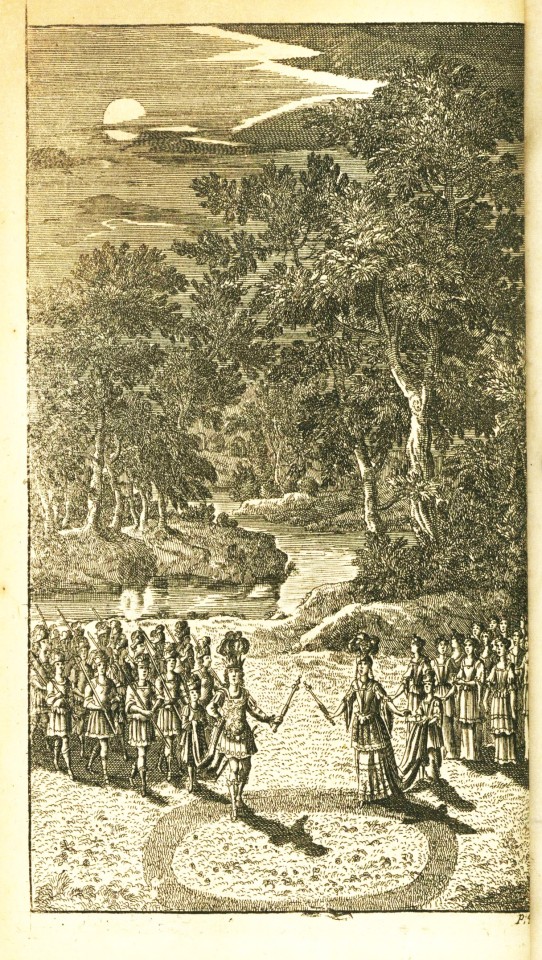
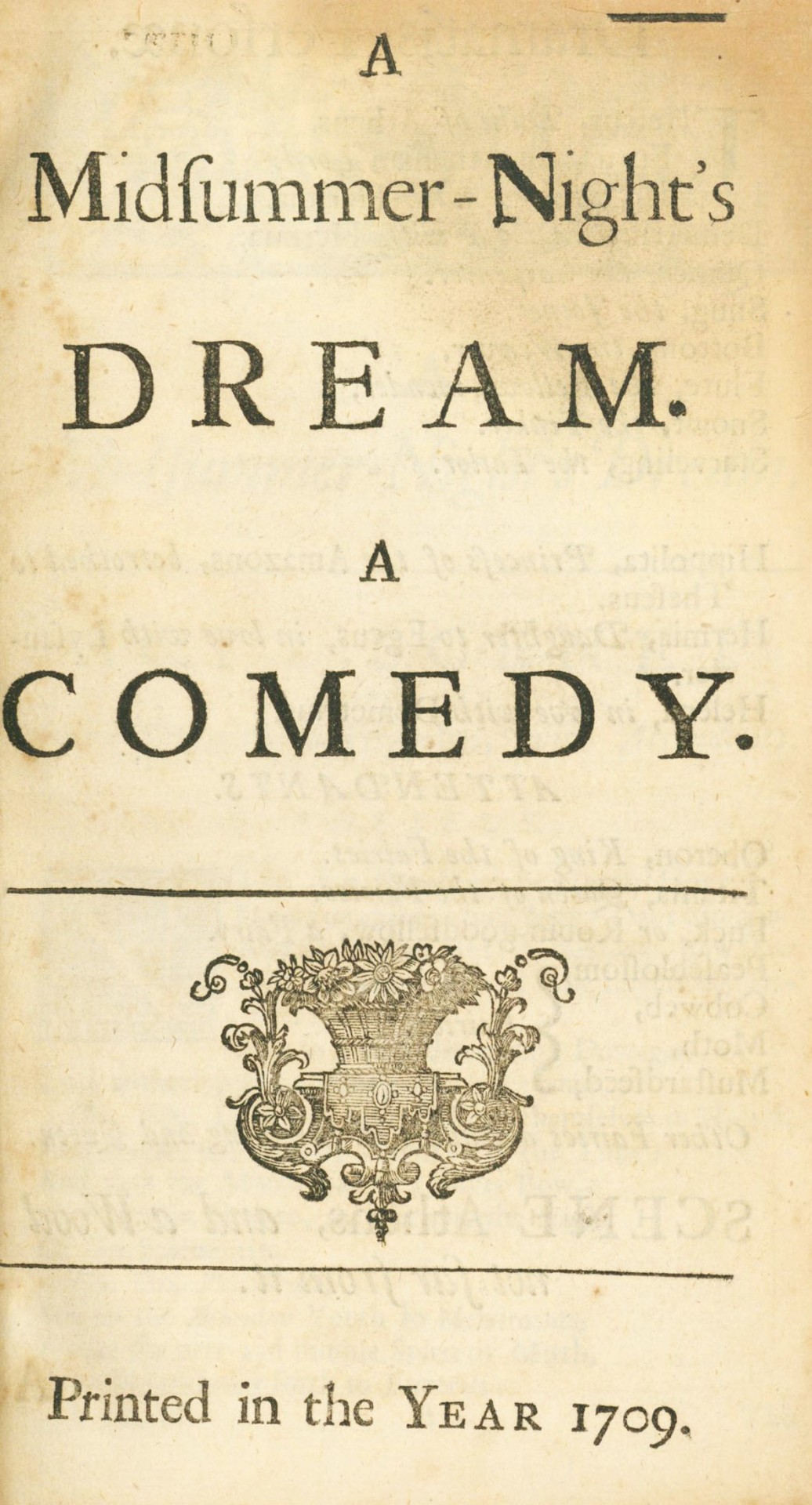
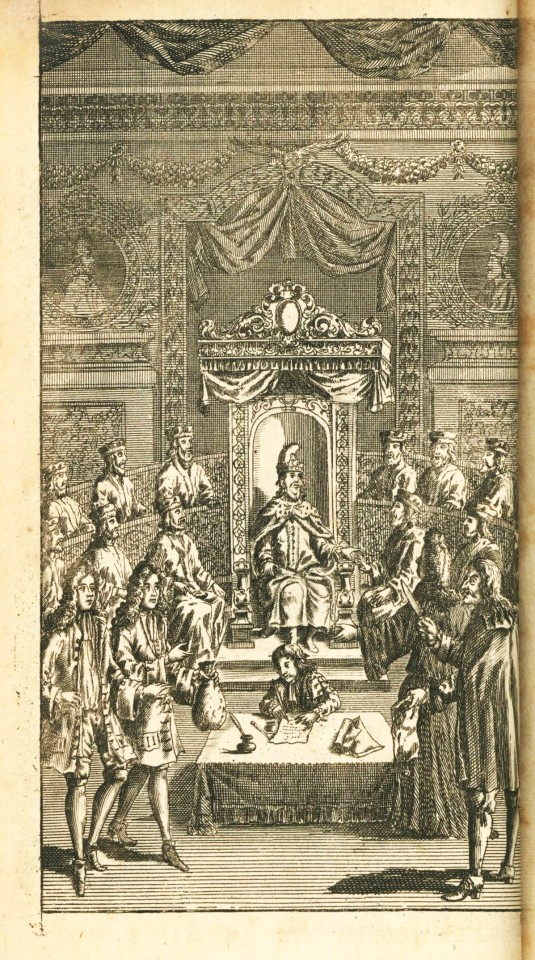
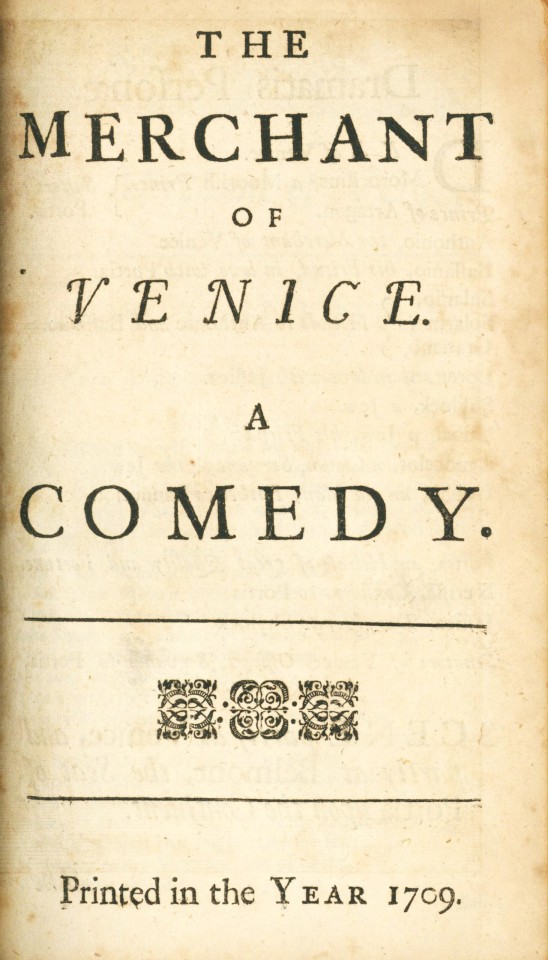


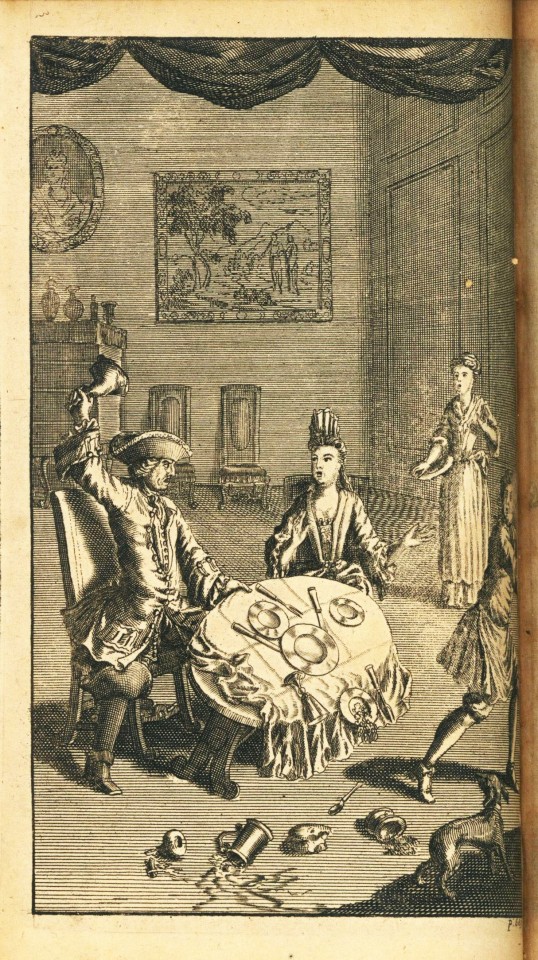
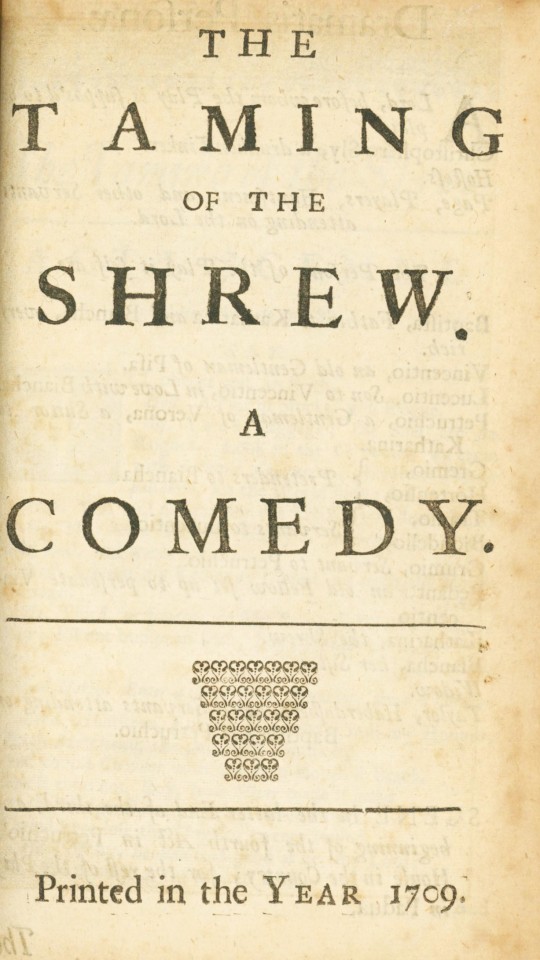
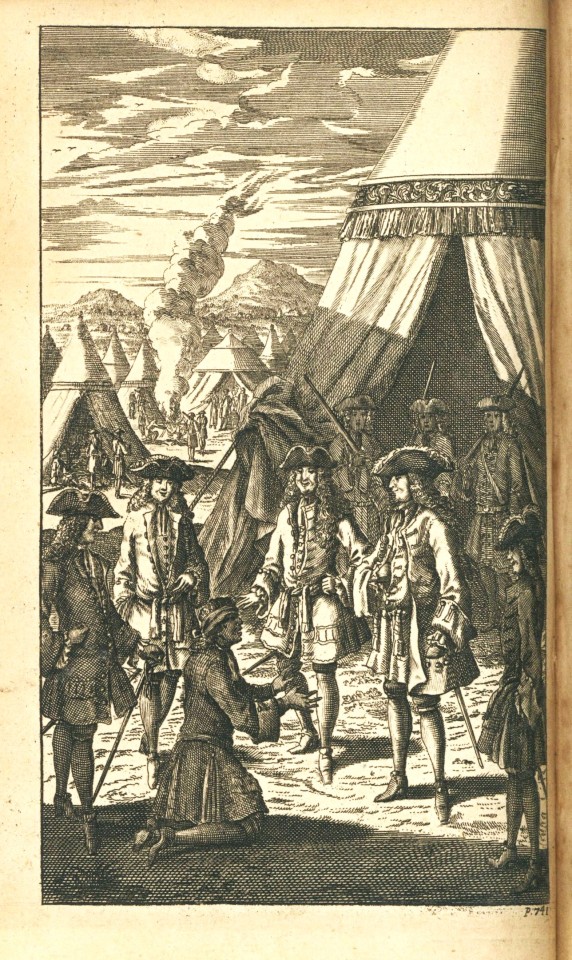
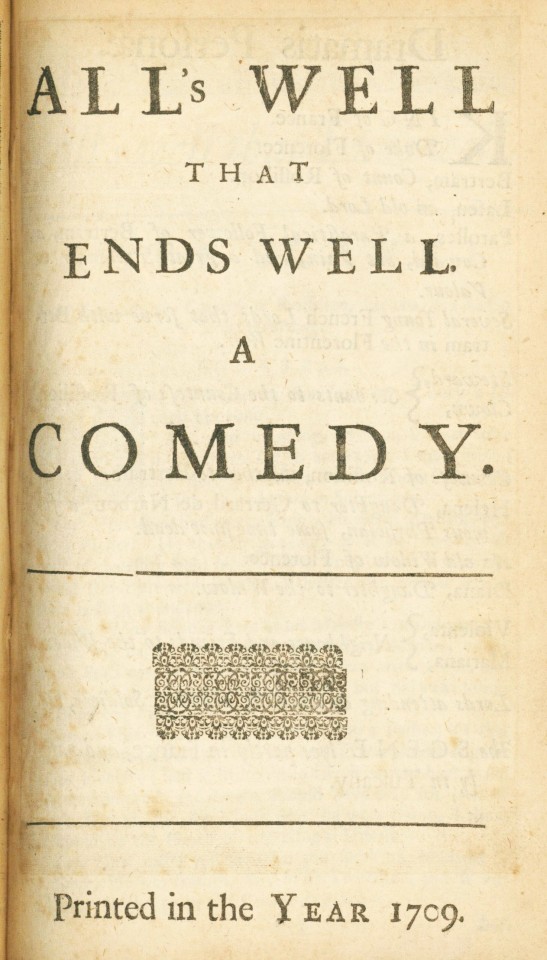

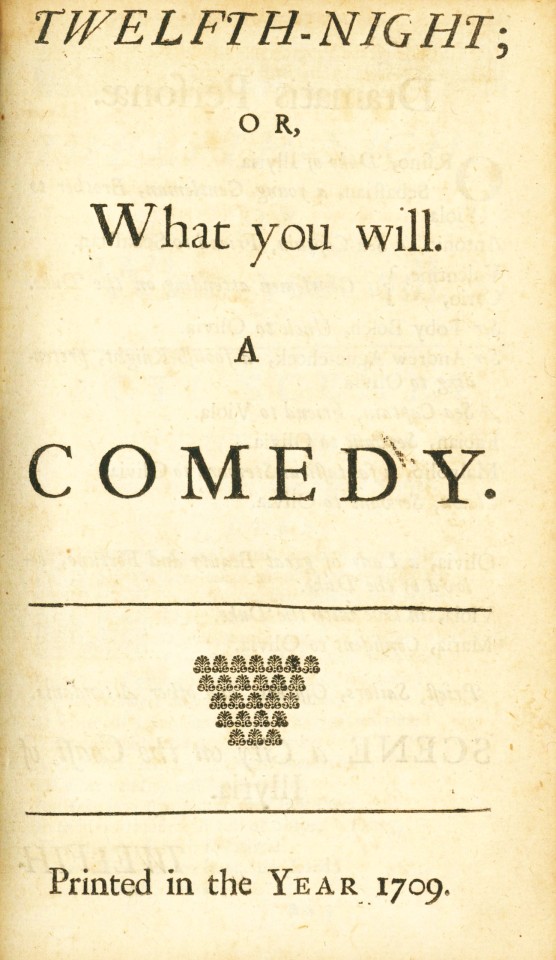
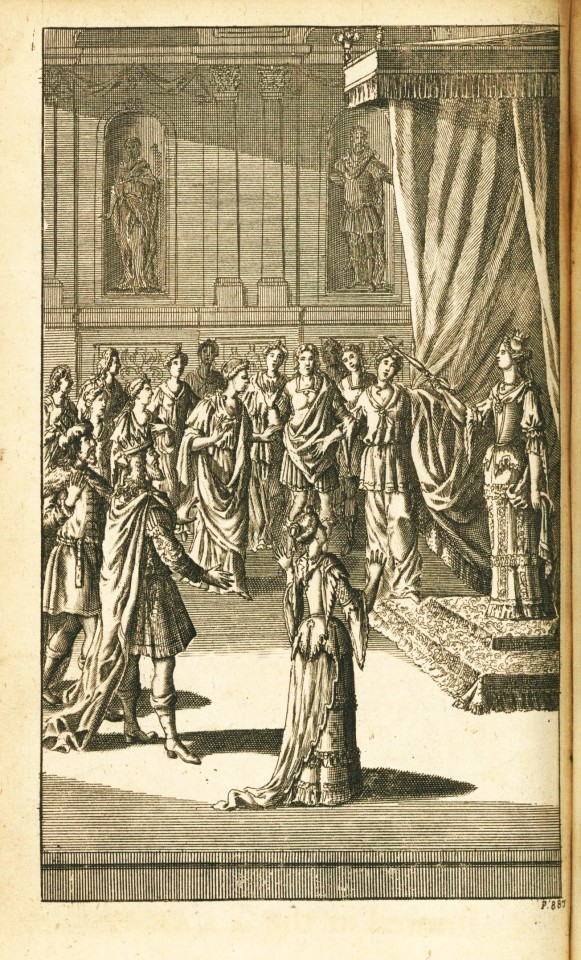

This weekend we return to Nicholas Rowe’s (1674-1718) The Work of Mr. William Shakespear; in Six Volumes. Published in London in 1709 by Jacob Tonson (1655-1736), perhaps the most prolific of Shakespeare publishers, this second edition holds an important place within Shakespearean publication history. The Work of Mr. William Shakespear; in Six Volumes is recognized as the first octavo edition, the first illustrated edition, the first critically edited edition, and the first to present a biography of the poet.
This week, we introduce you to the second which consists of all comedies, including A Midsummer-Night's Dream, Merchant of Venice, As You Like It, Taming of the Shrew, All’s Well that Ends Well, Twelfth-Night; or What You Will, and The Winter’s Tale. A full-page engraving by the French Baroque artist and book illustrator François Boitard (1670-1715) precedes each play.
In addition to Rowe’s editorial decisions to divide the plays into scenes and include notes on the entrances and exits of the players, he also normalised the spelling of names and included a dramatis personae preceding each play. The only chronicled critique of Rowe’s momentous editorial endeavor is his choice in basing his text on the corrupt Fourth Folio.
Perhaps of interest to some of our readers is the exceptional use of signature marks and catchwords throughout the volumes of The Work of Mr. William Shakespear; in Six Volumes. Found on the bottom of the pages, the signature marks and catchwords helped the bookbinder or printer make sure the pages were sent to the press in the right order and that subsequent leaves were bound in the correct order. Signature marks through the use of a letter and number combination marking the first page of a leaf or section, and catchwords by way of anticipating the first word of the following page.

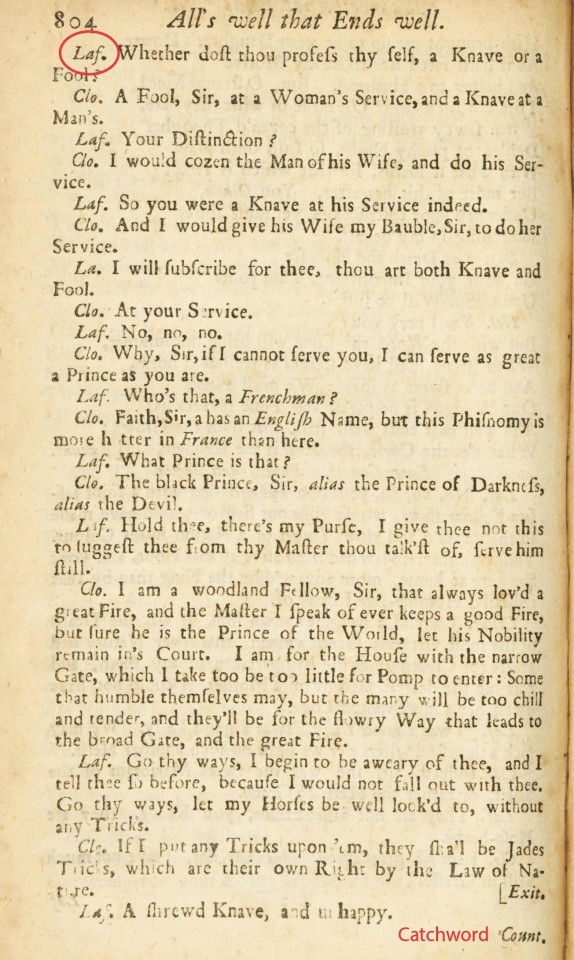
View more volumes of The Works of Mr. William Shakespear; in Six Volumes here.
View more Shakespeare Weekend posts.
-Jenna, Special Collections Graduate Intern
#Shakespeare Weekend#William Shakespeare#Shakespeare#Nicholas Rowe#The Works of Mr. William Shakespear#Jacob Tonson#François Boitard#A Midsummer Night's Dream#Merchant of Venice#As You Like It#Taming of the Shrew#All's Well That Ends Well#Twelfth-Night or What You Will#The Winter's tale#signature mark#catchword#etching
61 notes
·
View notes
Video
youtube
Il Cane e il Suo Generale - Trailer Cartone Animato by Film&Clips
TONINO GUERRA
Il cane e il suo generale (Le Chien, le Général et les Oiseaux) è un film d'animazione franco-italiano del 2003 diretto da Francis Nielsen.
Un anziano generale russo in pensione fa tutte le notti lo stesso sogno: quando, molti anni prima, appiccò il fuoco a Mosca, occupata da Napoleone, mettendo delle schegge di legno incendiarie nelle code dei piccioni. A distanza di molti anni, è ancora tormentato dal ricordo degli uccelli in fiamme ed è attaccato ogni giorno da tutti i volatili di Pietroburgo, che vogliono vendicare i loro simili. Un giorno, gli uccelli sono messi in fuga da un cane, rimasto senza padrone, che segue il generale fino a casa: non riuscendo a scacciarlo, egli cerca qualcuno a cui affidarlo e lo cede a un venditore ambulante pagandolo perché lo prenda con sé, ma poi decide di riprenderlo con sé. L'uomo però dice che il cane è scappato; il generale e il suo servitore lo cercano e lo ritrovano davanti alla porta di casa. Il generale lo chiama Bonaparte, in ricordo del suo vecchio nemico, e mentre osserva il ritratto della moglie morta ha l'ispirazione per ottenere finalmente il perdono per la sua azione di tanti anni prima: liberare tutti gli uccelli dalle gabbie. Il primo giorno è il generale a liberare gli uccellini in vendita al mercato, ma dopo aver constatato il piccolo numero di esemplari rilasciati e aver dovuto rifondere i venditori di tasca propria, egli si rende conto che è necessario cambiare strategia. Bonaparte raduna sulla Neva ghiacciata un gran numero di cani, e il suo padrone si mette a scrivere sui muri "I cani reclamano la libertà degli uccelli". I padroni dei cani cercano di riprenderli con sé, ma solo il cane guida di un cieco ubbidisce al richiamo; gli altri rimangono sul fiume ghiacciato, benché il disgelo s'avvicini. Al ritorno dello zar Alessandro II in città, il generale si fa ricevere in udienza e gli strappa il decreto con cui ordina di liberare tutti gli uccelli della città. Gli uccelli prima in gabbia possono così spiccare il volo e fanno piovere fiori (anziché i soliti escrementi) sul generale e la città.
La sceneggiatura è ispirata alla vita del padre della Contessa di Ségur (autrice del romanzo Les Malheurs de Sophie), il conte Fëdor Rostopčin (1763-1826). Questi, nel 1812, era il governatore di Mosca al momento dell'ingresso in città della Grande Armée. Malgrado l'opposizione dei proprietari delle dimore più belle, organizzò il grande incendio che costrinse Napoleone ad una ritirata disastrosa. Sebbene il piano fosse riuscito, si trovò ad essere malvisto a tal punto da andare in esilio in più paesi, tra i quali la Francia nel 1817. Tornò a vivere in Russia solo poco prima della sua morte.
Francia, Italia
Anno 2003
Durata 75 min
Genere animazione
Regia Francis Nielsen
Sceneggiatura Tonino Guerra
Produttore Stéphane Tchalgadjieff e Raphaël Berdugo
Produttore esecutivo Danièle Gégauff
Casa di produzione Solaris
Roissy Films
Téva
Prima Film
Gam Films
Rai Fiction
Canal+
Distribuzione in italiano Mikado Film
Montaggio Alice Boitard
Musiche Andrea Guerra
Art director Andreï Khrjanovski
Character design Sergej Barkhin
Animatori Bruno Wouters
Sfondi Patrick Clerc
Doppiatori originali
Philippe Noiret: il narratore
Michel Elias: il cane
François Jérosme: il generale
Marie Vincent
Doppiatori italiani
Tonino Guerra: il narratore / il generale
❤️❤️❤️❤️❤️❤️❤️❤️❤️❤️❤️❤️❤️❤️❤️❤️❤️❤️❤️❤️ ❤️❤️
#gustavopetro
#colombia
#DONALDTRUMP
#TRUMP
#BOLSONARO
#DORIGHEZZI
#STRISCIALANOTIZIA
#FRANCESCO
#RUTELLI
#PROPAGANDALIVE
#ELUANA
#ENGLARO
#ELUANAENGLARO
#CRISTIANODEANDRE
#twitter
#facebook
#skyrock
#linkedin
#instagram
#okru
#tiktok
0 notes
Photo

Depuis hier matin, je suis plongé dans un monde parallèle où toute ma vie a changé.
Love at Second Sight (Mon inconnue), Hugo Gélin (2019)
#Hugo Gélin#Igor Gotesman#Benjamin Parent#François Civil#Joséphine Japy#Benjamin Lavernhe#Camille Lellouche#Amaury de Crayencour#Edith Scob#Juliette Dol#Samir Boitard#Christian Benedetti#Guillaume Bouchède#Nicolas Massart#Virginie Bruant#2019
15 notes
·
View notes
Photo

A Scene from Ancient History, François Boitard, Metropolitan Museum of Art: Drawings and Prints
Gift of Dr. Bruce B. Grynbaum, in memory of his parents, Gertrude and Maurycy Grynbaum, 1991
Size: 22 1/2 x 16 in. (57.2 x 40.6 cm)
Medium: Pen and black ink, gray wash
https://www.metmuseum.org/art/collection/search/336326
4 notes
·
View notes
Photo
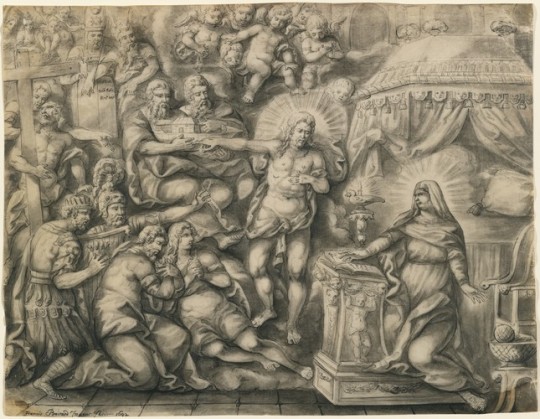
Christ Revealing the Prophets of the Old Testament to the Virgin, François Boitard, 1692, Harvard Art Museums: Drawings
Harvard Art Museums/Fogg Museum, Gift of Jeffrey E. Horvitz
Size: 22.5 x 29.5 cm (8 7/8 x 11 5/8 in.)
Medium: Black ink and gray wash on vellum
https://www.harvardartmuseums.org/collections/object/293323
2 notes
·
View notes
Text
[Reseña] Amor a segunda vista: cuando el ceder se vuelve parte de la relación
[Reseña] Amor a segunda vista: cuando el ceder se vuelve parte de la relación
Título original: Mon inconnue
Dirección: Hugo Gélin
Guion: Hugo Gélin, Igor Gotesman, Benjamin Parent (Idea: Hugo Gélin. Diálogos: Hugo Gélin, Igor Gotesman)
Reparto: François Civil, Joséphine Japy, Benjamin Lavernhe, Camille Lellouche, Amaury de Crayencour, Edith Scob, Juliette Dol, Samir Boitard, Christian Benedetti, Guillaume Bouchède
SINOPSIS: Durante la noche, Rafael se encuentra inmerso en un…
View On WordPress
0 notes
Photo

Jacques-André-Joseph Aved (Jan 12, 1702 – Mar 4, 1766), also called le Camelot and Avet le Batave, was a French painter of the 18th century and one of the main French Rococo portraitists. He painted among others the Ottoman Empire ambassador to France in 1742, Yirmisekizzade Mehmed Said Efendi.
var quads_screen_width = document.body.clientWidth; if ( quads_screen_width >= 1140 ) { /* desktop monitors */ document.write('<ins class="adsbygoogle" style="display:inline-block;width:300px;height:250px;" data-ad-client="pub-9117077712236756" data-ad-slot="1897774225" >'); (adsbygoogle = window.adsbygoogle || []).push({}); }if ( quads_screen_width >= 1024 && quads_screen_width < 1140 ) { /* tablet landscape */ document.write('<ins class="adsbygoogle" style="display:inline-block;width:300px;height:250px;" data-ad-client="pub-9117077712236756" data-ad-slot="1897774225" >'); (adsbygoogle = window.adsbygoogle || []).push({}); }if ( quads_screen_width >= 768 && quads_screen_width < 1024 ) { /* tablet portrait */ document.write('<ins class="adsbygoogle" style="display:inline-block;width:300px;height:250px;" data-ad-client="pub-9117077712236756" data-ad-slot="1897774225" >'); (adsbygoogle = window.adsbygoogle || []).push({}); }if ( quads_screen_width < 768 ) { /* phone */ document.write('<ins class="adsbygoogle" style="display:inline-block;width:300px;height:250px;" data-ad-client="pub-9117077712236756" data-ad-slot="1897774225" >'); (adsbygoogle = window.adsbygoogle || []).push({}); }
His father was a physician and he was orphaned when he was a little boy. He was raised in Amsterdam by one of his uncles, who was a captain in the Dutch Army.
After his training in Amsterdam with François Boitard and Bernard Picart, Jacques Aved started working in Paris for Belle in 1721. He later entered at the Royal Academy of Painting and Sculpture in 1731 and he was appointed councillor after graduating in 1734 and in 1759, he took part in his last salon. In 1753 he became a member of the Confrerie Pictura.
As an art dealer and collector, he owned one of the most important collections with works by Italian, French and especially Dutch artists. This collection was sold at auction in 1766.
Carle Van Loo, François Boucher, Dumont le Romain and Chardin were some of his pupils.
Jacques Aved was originally published on HiSoUR Art Collection
0 notes
Text



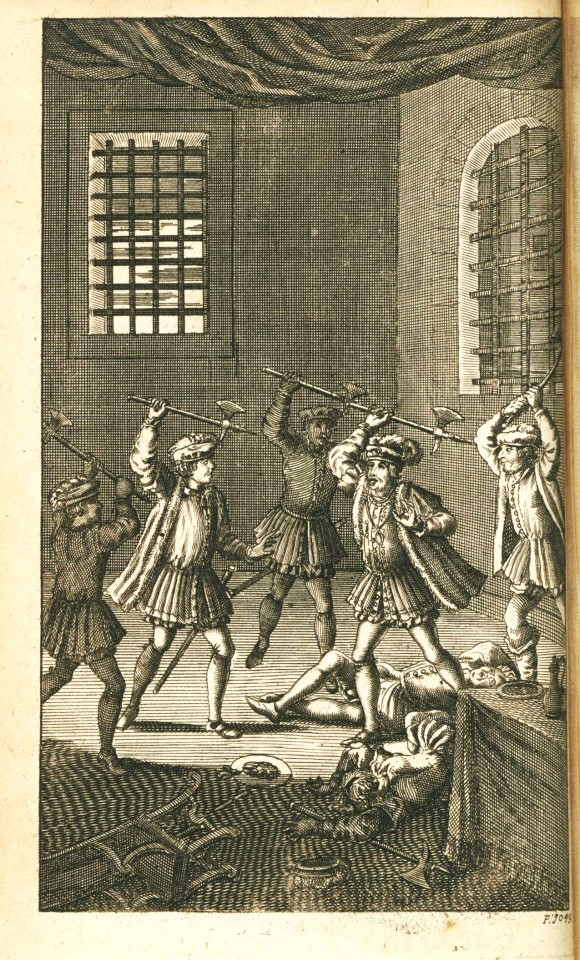
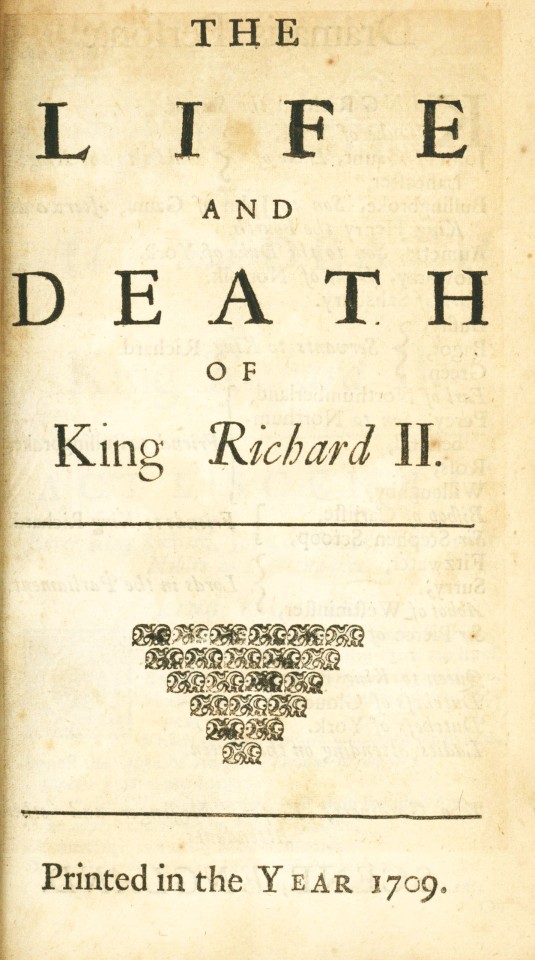



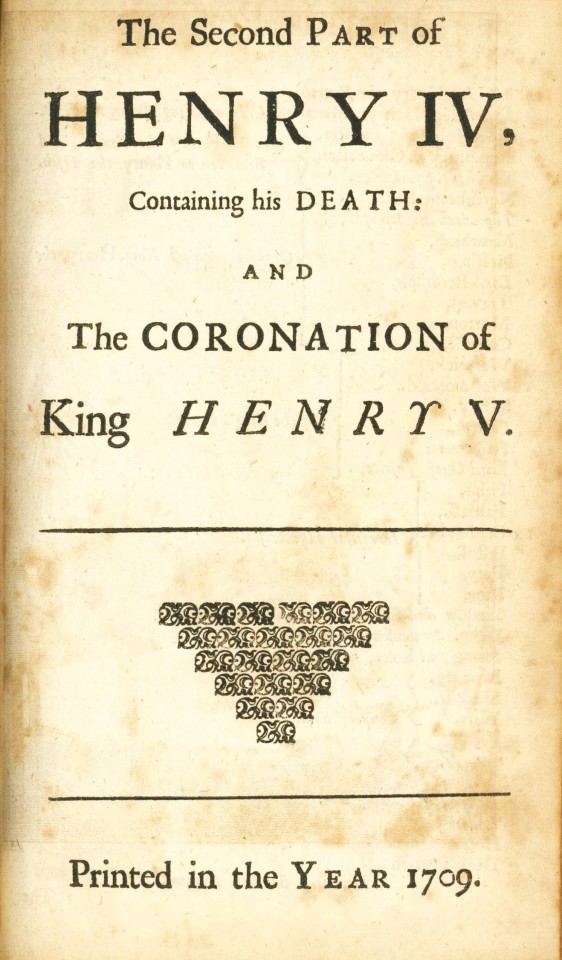

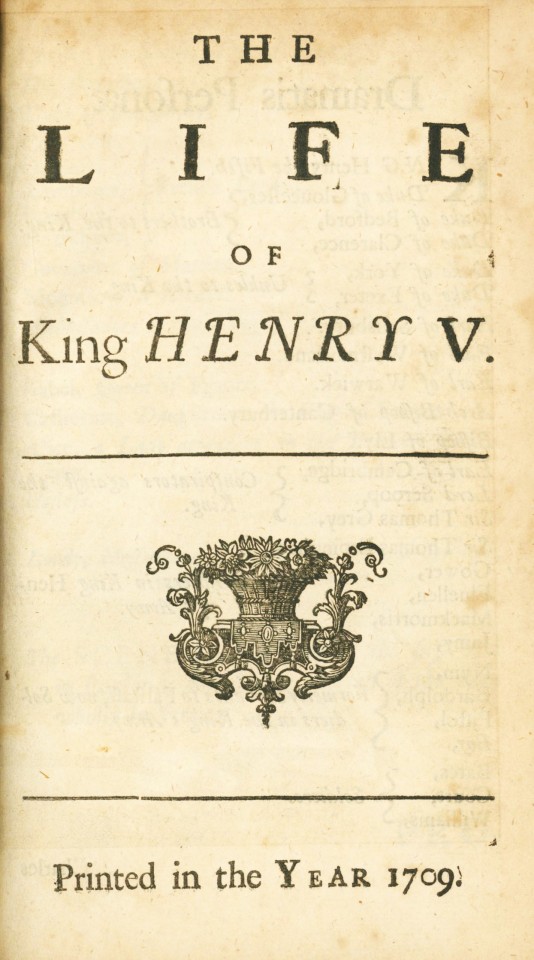
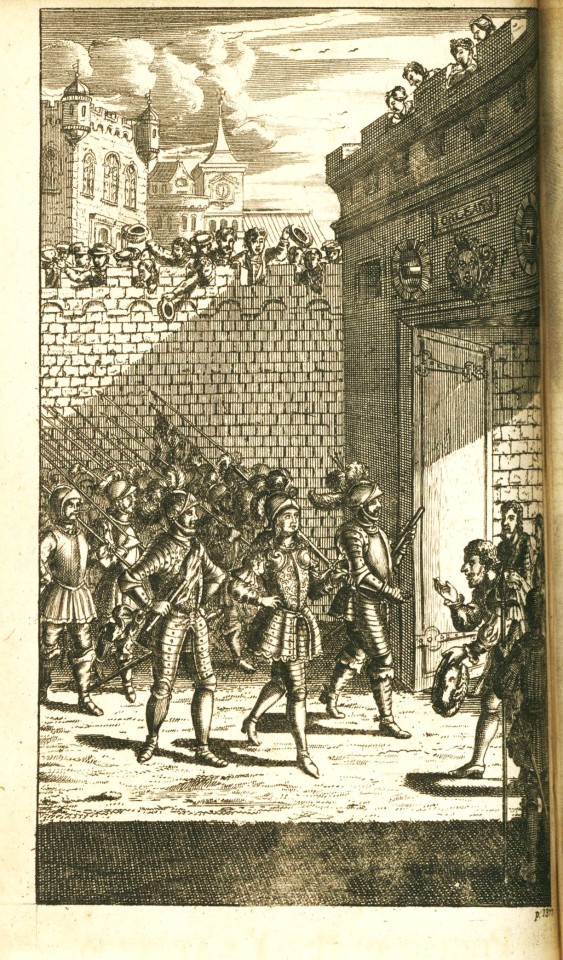



Shakespeare Weekend
We are halfway through Nicholas Rowe’s (1674-1718) The Work of Mr. William Shakespear; in Six Volumes! Published in London in 1709 by Jacob Tonson (1655–1736), this second edition holds an important place within Shakespearean publication history. The Work of Mr. William Shakespear; in Six Volumes is recognized as the first octavo edition, the first illustrated edition, the first critically edited edition, and the first to present a biography of the poet.
This week, we explore the third volume of The Work of Mr. William Shakespear; in Six Volumes. The third volume encompasses historic plays including a Shakespearean Henriad depicting the rise of English kings. The volume is comprised of King John, King Richard II, Henry IV Part I, Henry IV Part II, King Henry V, King Henry VI Part I, and King Henry VI Part II. While the plays have recurring characters and settings, there is no evidence that they were written with the intention of being considered as a group. A full-page engraving, designed by the French Baroque artist and book illustrator François Boitard (1670-1715) and engraved by English engraver Elisha Kirkall (c.1682–1742), precedes each play.
In addition to Rowe’s editorial decisions to divide the plays into scenes and include notes on the entrances and exits of the players, he also normalised the spelling of names and included a dramatis personae preceding each play. The only chronicled critique of Rowe’s momentous editorial endeavor is his choice in basing his text on the corrupt Fourth Folio.


View more volumes of The Works of Mr. William Shakespear; in Six Volumes here.
View more Shakespeare Weekend posts.
-Jenna, Special Collections Graduate Intern
#shakespeare weekend#nicholas rowe#the works of mr. william shakespear#king john#king richard II#Henry IV#King Henry V#King Henry VI#jacob tonson#henriad#François Boitard#Elisha Kirkall#engravings
61 notes
·
View notes
Text
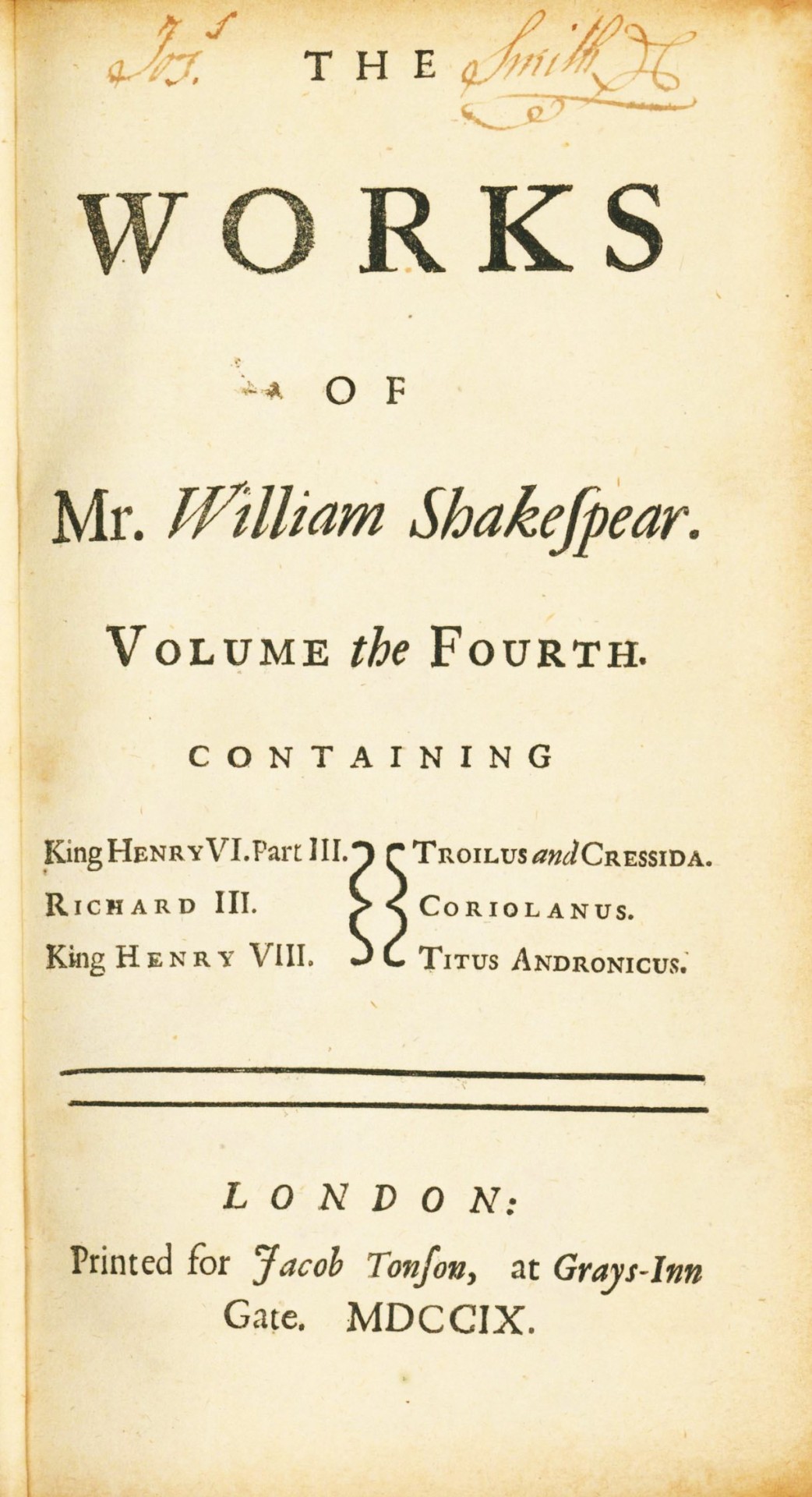
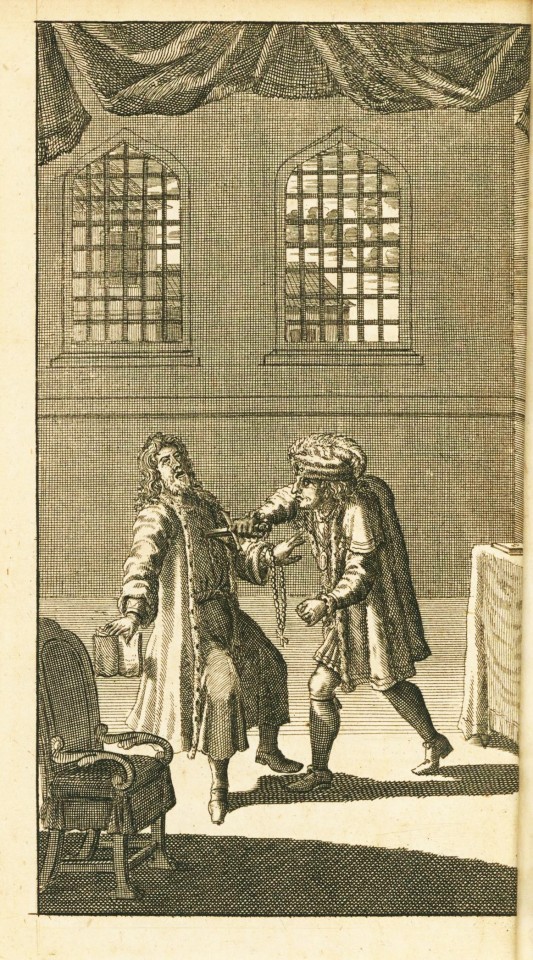
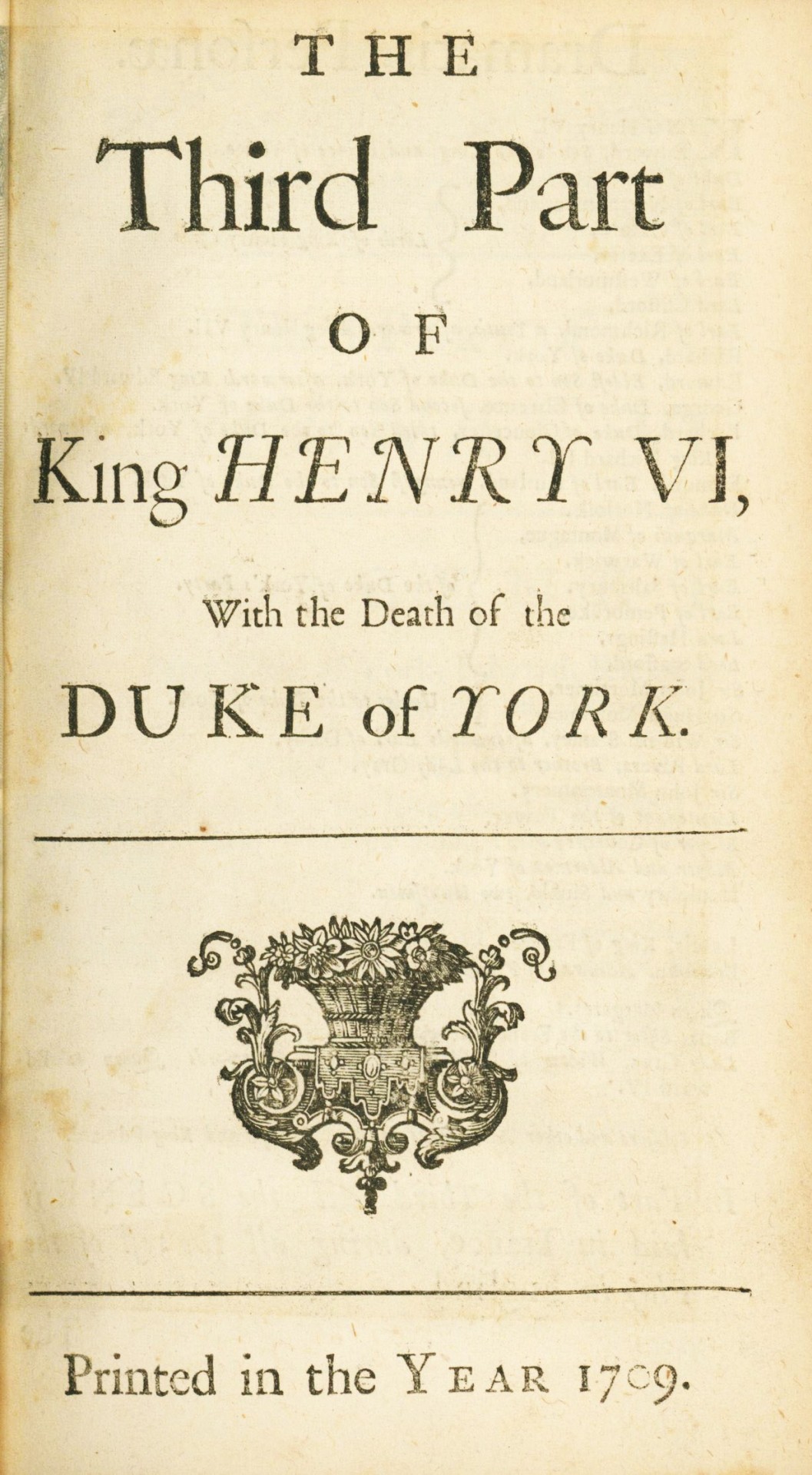


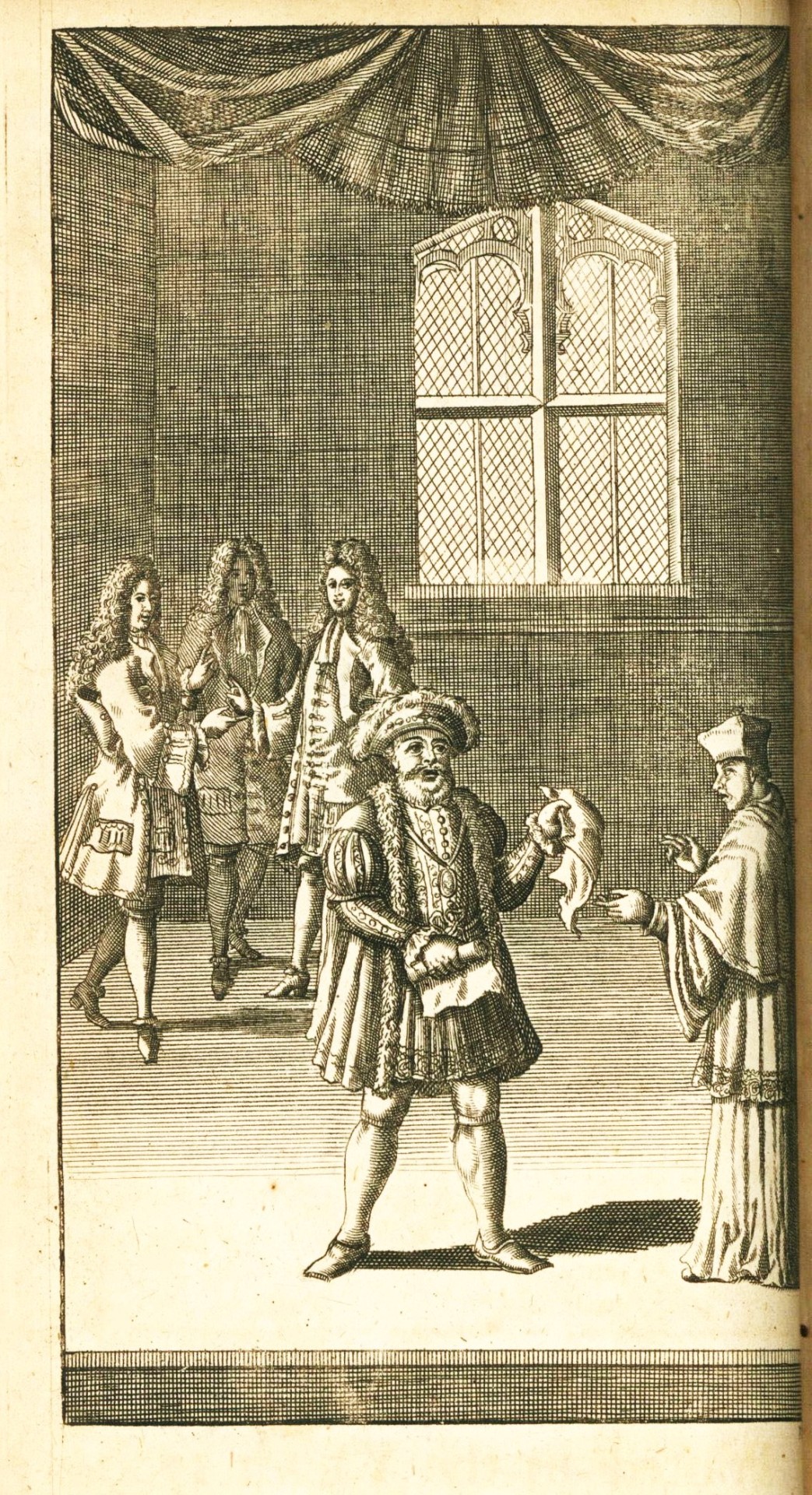





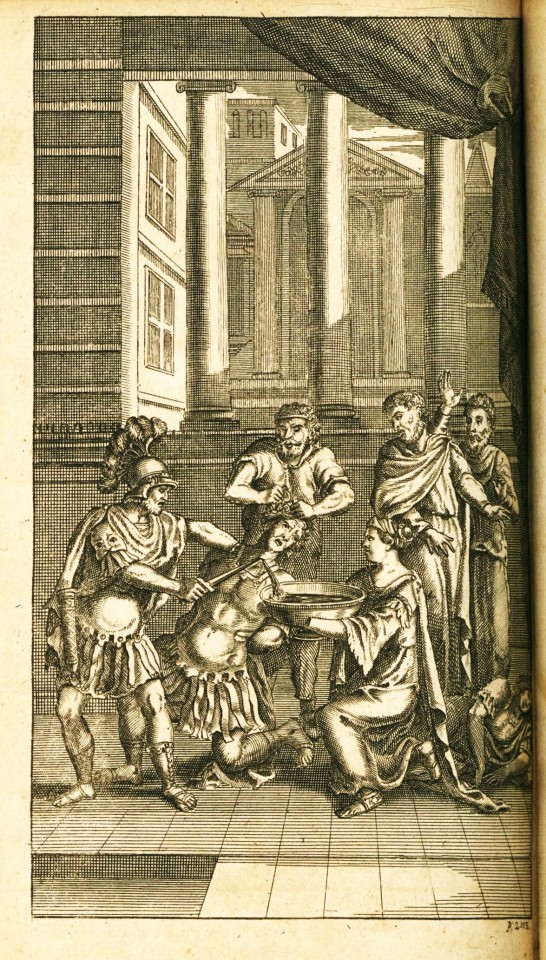
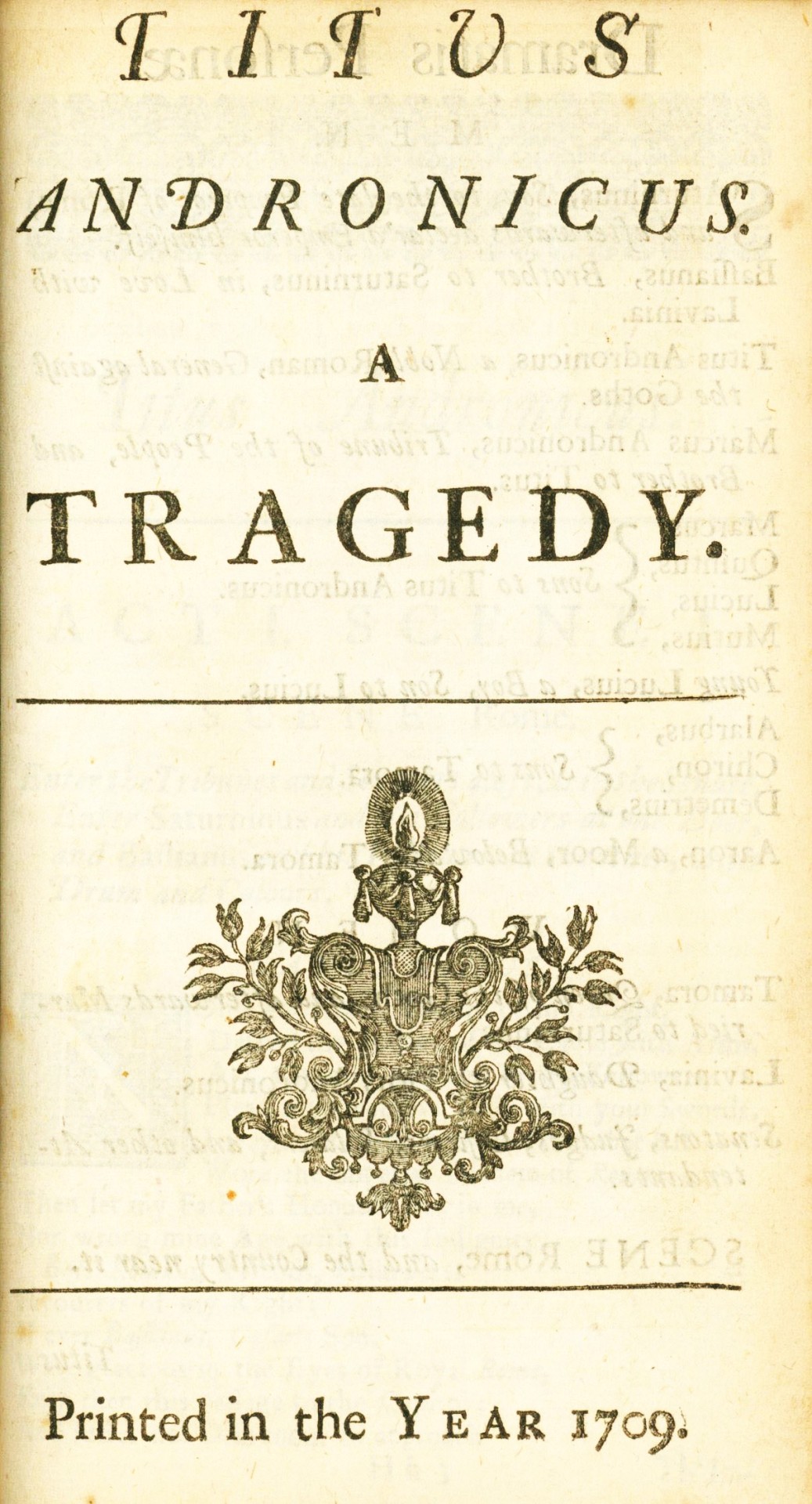
Shakespeare Weekend
This weekend we return to Nicholas Rowe’s (1674-1718) The Work of Mr. William Shakespear; in Six Volumes. Published in London in 1709 by Jacob Tonson (1655–1736), this second edition holds an important place within Shakespearean publication history. The Work of Mr. William Shakespear; in Six Volumes is recognized as the first octavo edition, the first illustrated edition, the first critically edited edition, and the first to present a biography of the poet.
Volume four picks up where volume three left off, returning readers to the Kings of England. The fourth volume begins with King Henry VI. Part III, known for having one of the longest soliloquies and more battle scenes than any other Shakespeare play. Following King Henry VI. Part III is Richard III and King Henry VIII. The volume concludes with three of Shakespeare’s tragedies; Troilus and Cressida, Coriolanus, and Titus Andronicus. A full-page engraving by the French Baroque artist and book illustrator François Boitard (1670-1715) and engraved by English engraver Elisha Kirkall (c.1682–1742) precedes each play. The Titus Andronicus engraving is particularly graphic, feeding the rumor that the play was Shakespeare’s attempt to emulate the violent and bloody plays of his contemporaries.
In addition to Rowe’s editorial decisions to divide the plays into scenes and include notes on the entrances and exits of the players, he also normalised the spelling of names and included a dramatis personae preceding each play. The only chronicled critique of Rowe’s momentous editorial endeavor is his choice in basing his text on the corrupt Fourth Folio.
View more volumes of The Works of Mr. William Shakespear; in Six Volumes here.
View more Shakespeare Weekend posts.
-Jenna, Special Collections Graduate Intern
#shakespeare weekend#nicholas rowe#the work of mr. william shakespear in six volumes#jacob tonson#king henry vi part iii#richard iii#king henry viii#troilus and cressida#coriolanus#titus andronicus#engravings#François Boitard#Elisha Kirkall
27 notes
·
View notes
Text

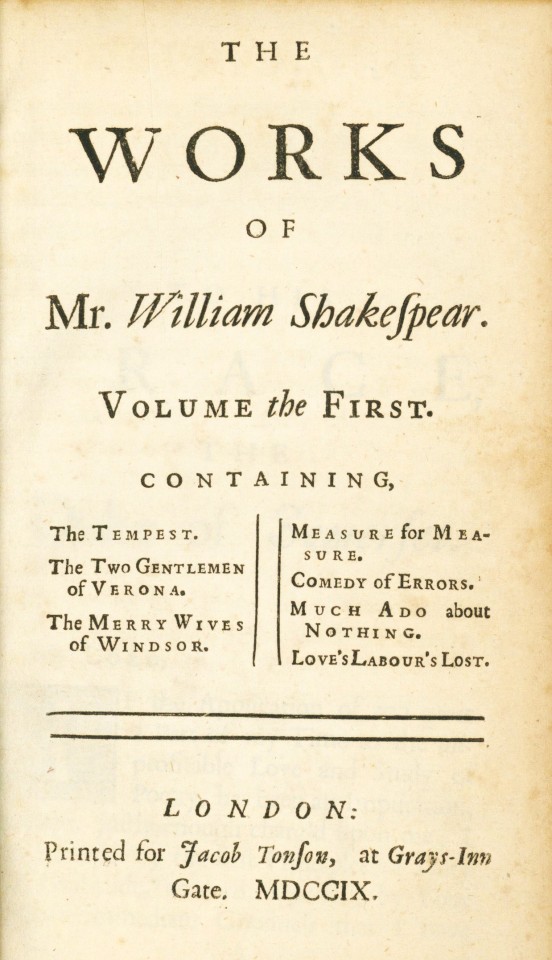



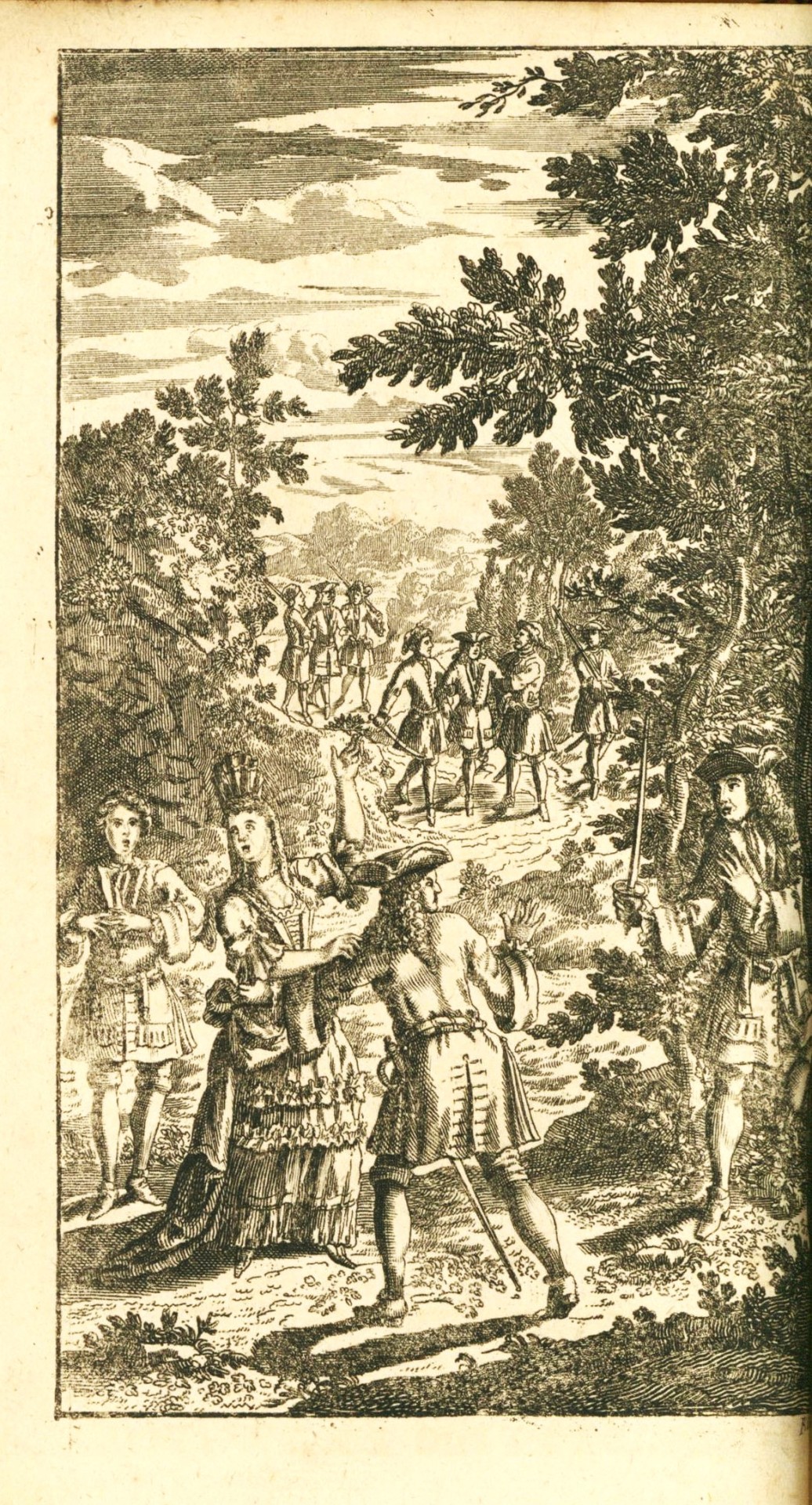



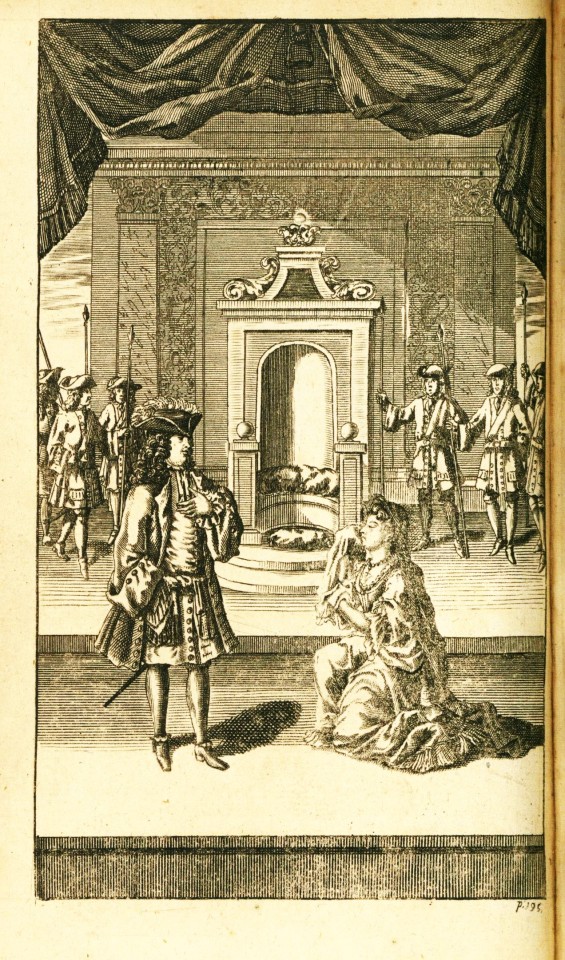

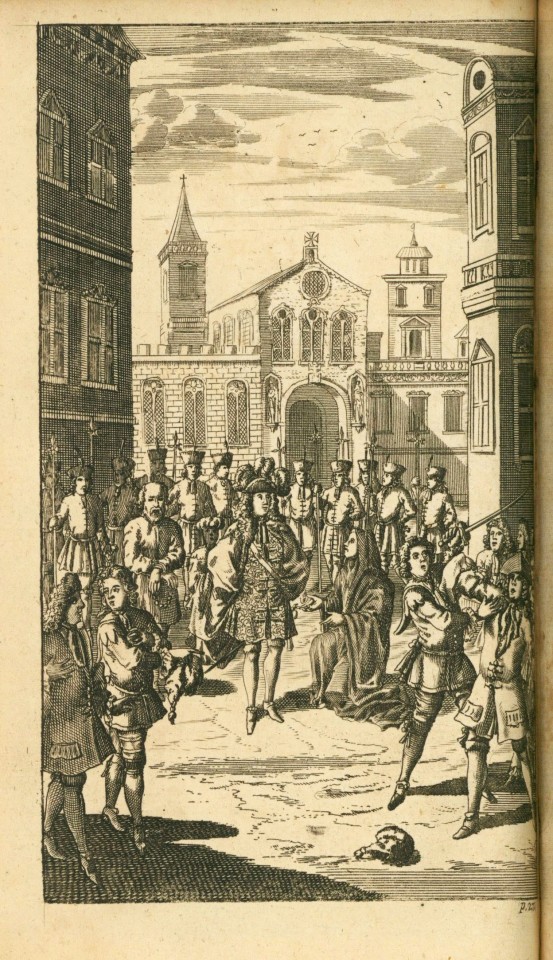
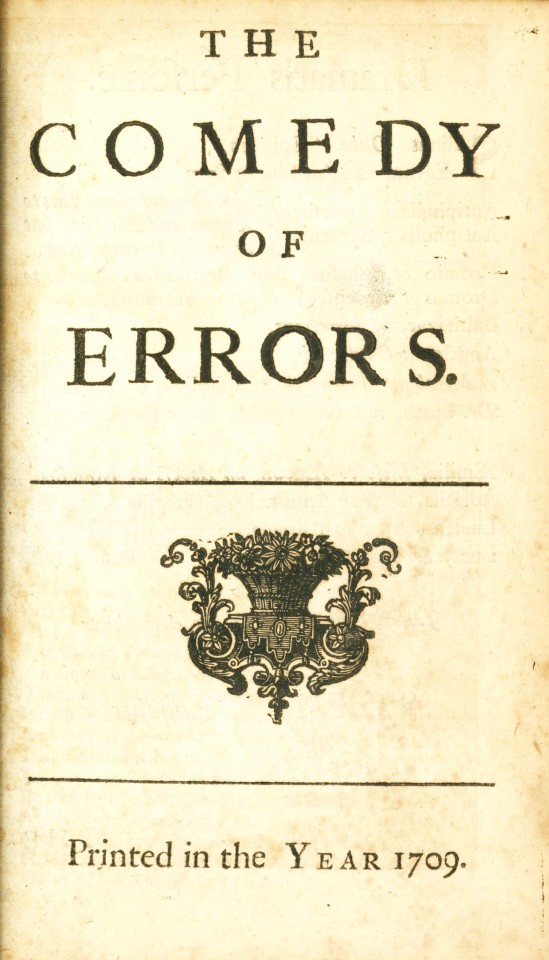
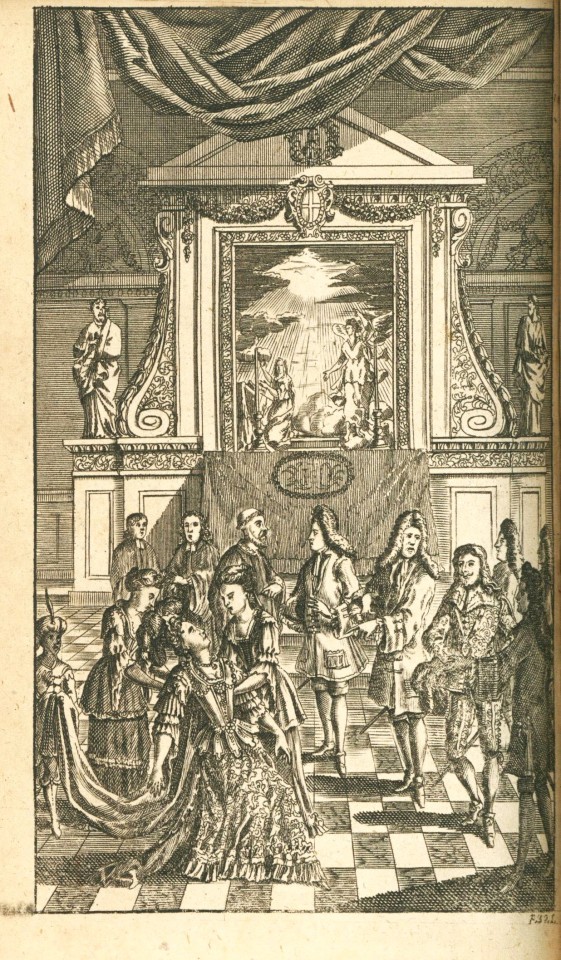
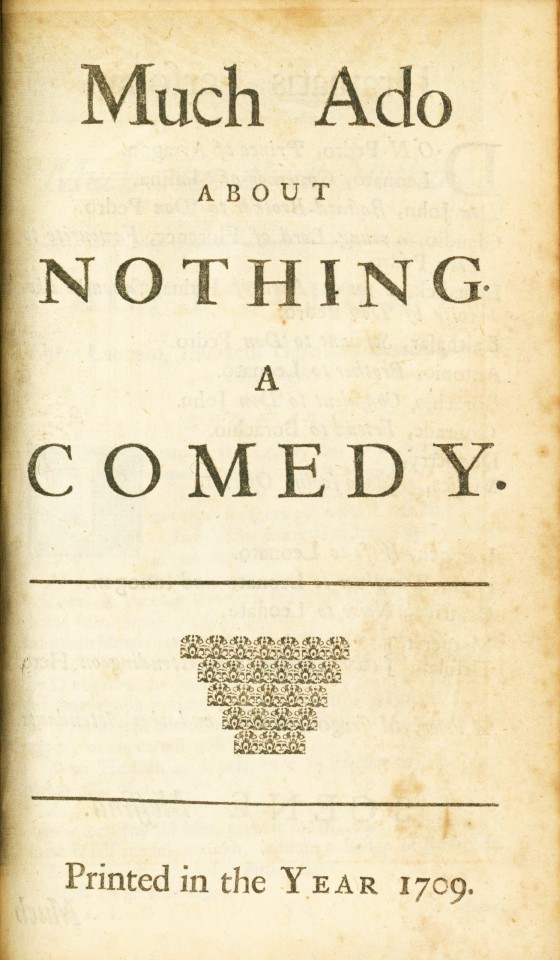


Shakespeare Weekend!
On the tail of our Limited Edition Club thirty-seven volume The Comedies Histories & Tragedies of William Shakespeare series, we are delving back into our Shakespeare Collection to explore Nicholas Rowe’s (1674-1718) The Work of Mr. William Shakespear; in Six Volumes. Published in London in 1709 by Jacob Tonson, this second edition holds an important place within Shakespearean publication history. The Work of Mr. William Shakespear; in Six Volumes is recognized as the first octavo edition, the first illustrated edition, the first critically-edited edition, and the first to present a biography of the poet.
Rowe, having been a dramatist and poet himself, was able to divide the plays into scenes and include notes on the entrances and exits of the players. He also normalised the spelling of names and included a dramatis personae preceding each play. The only chronicled critique of Rowe’s momentous editorial endeavor is his choice in basing his text on the corrupt Fourth Folio.
This week, we present you with the first volume of The Work of Mr. William Shakespear; in Six Volumes. It includes The Tempest, The Two Gentlemen of Verona, The Merry Wives of Windsor, Measure for Measure, Comedy of Errors, Much Ado About Nothing, and Love’s Labour’s Lost. A full-page engraving precedes each play with an additional frontispiece engraving of the Stratford monument. The illustrations are by the French Baroque artist and book illustrator François Boitard (1670-1715).
View more Shakespeare Weekend posts.
-- Jenna, Special Collections Graduate Intern
#Shakespeare Weekend#William Shakespeare#shakespeare#Nicholas Rowe#Rowe's Shakespeare#The Works of Mr. William Shakespear in Six Volumes#François Boitard#Jacob Tonson#The Tempest#The Two Gentlemen of Verona#The Merry Wives of Windsor#Measure for Measure#Comedy of Errors#Much Ado About Nothing#Love's Labour's Lost#engraving#etchings
24 notes
·
View notes
Text
Shakespeare Weekend
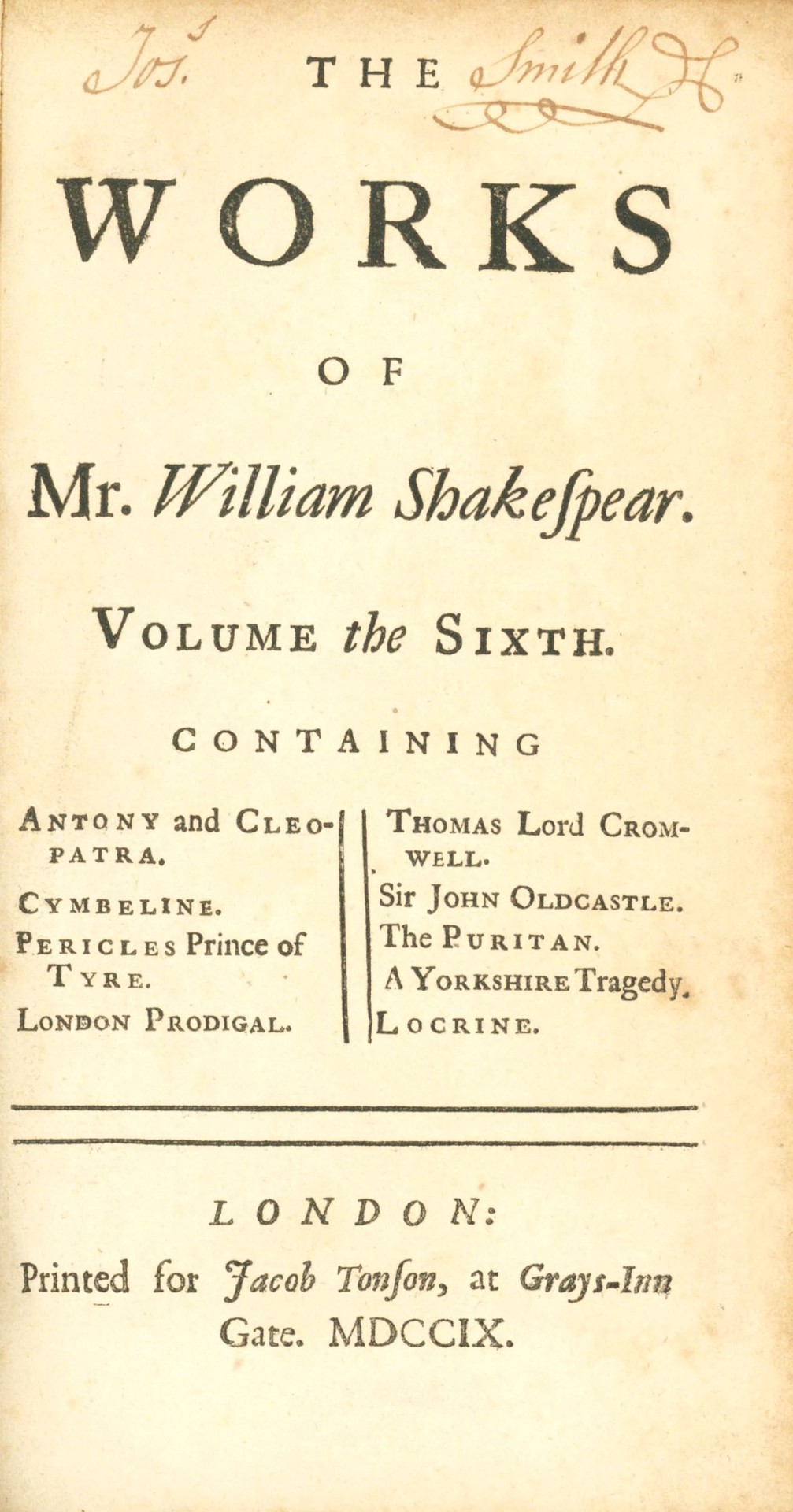


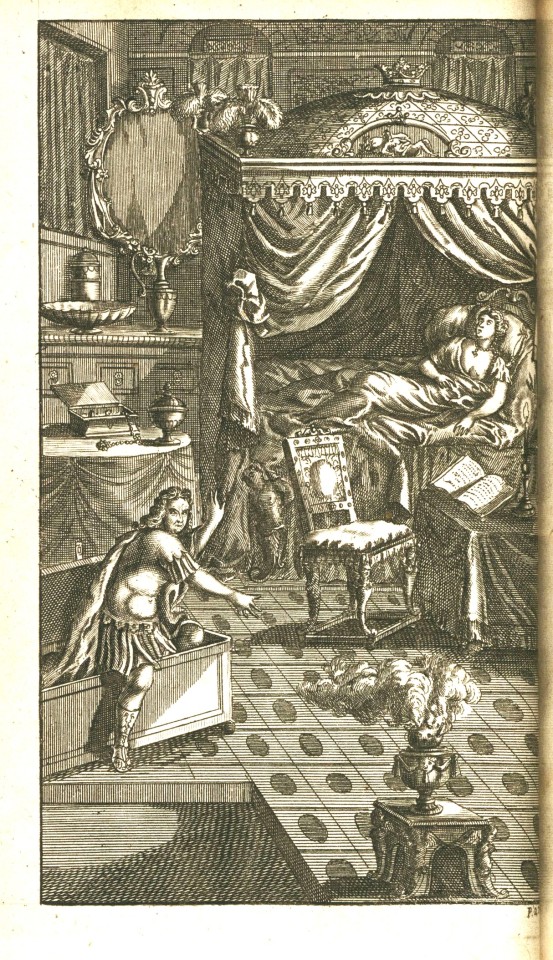
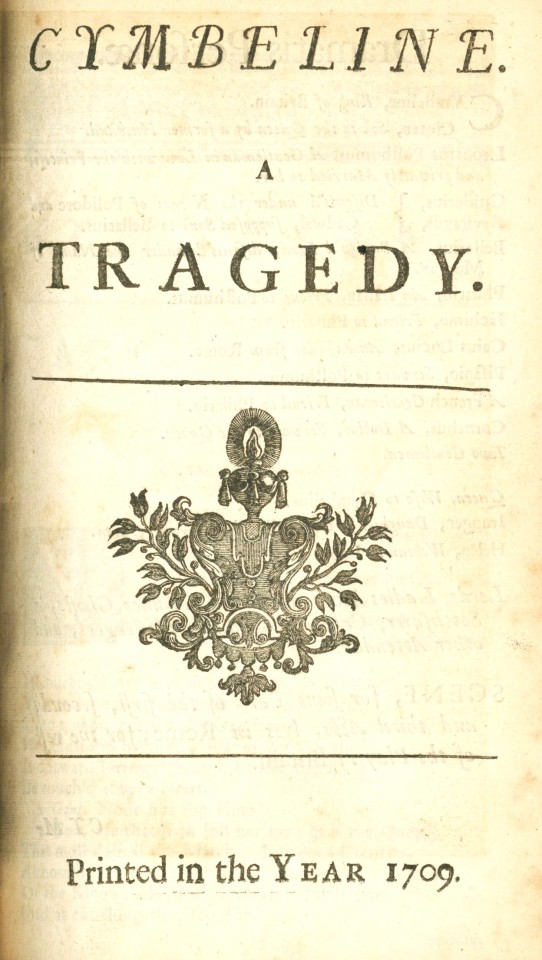
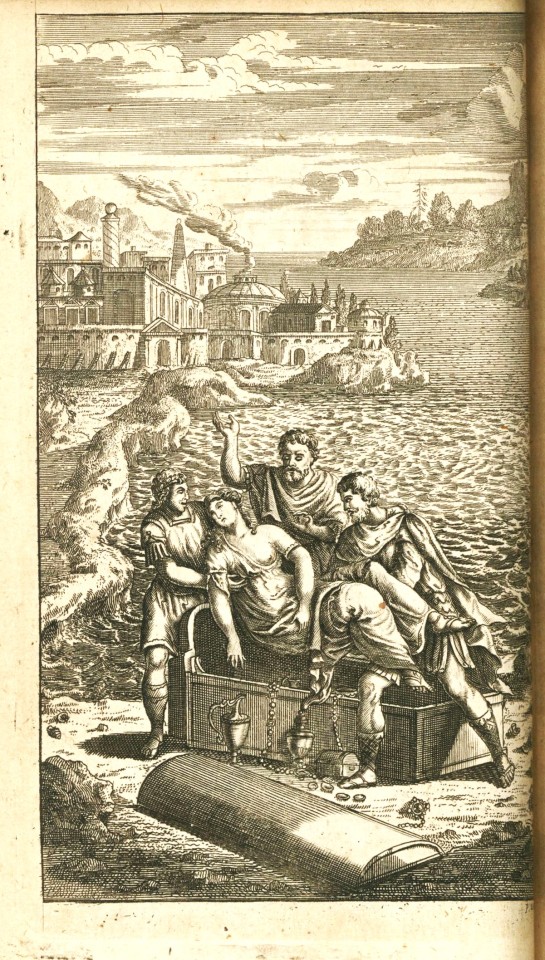


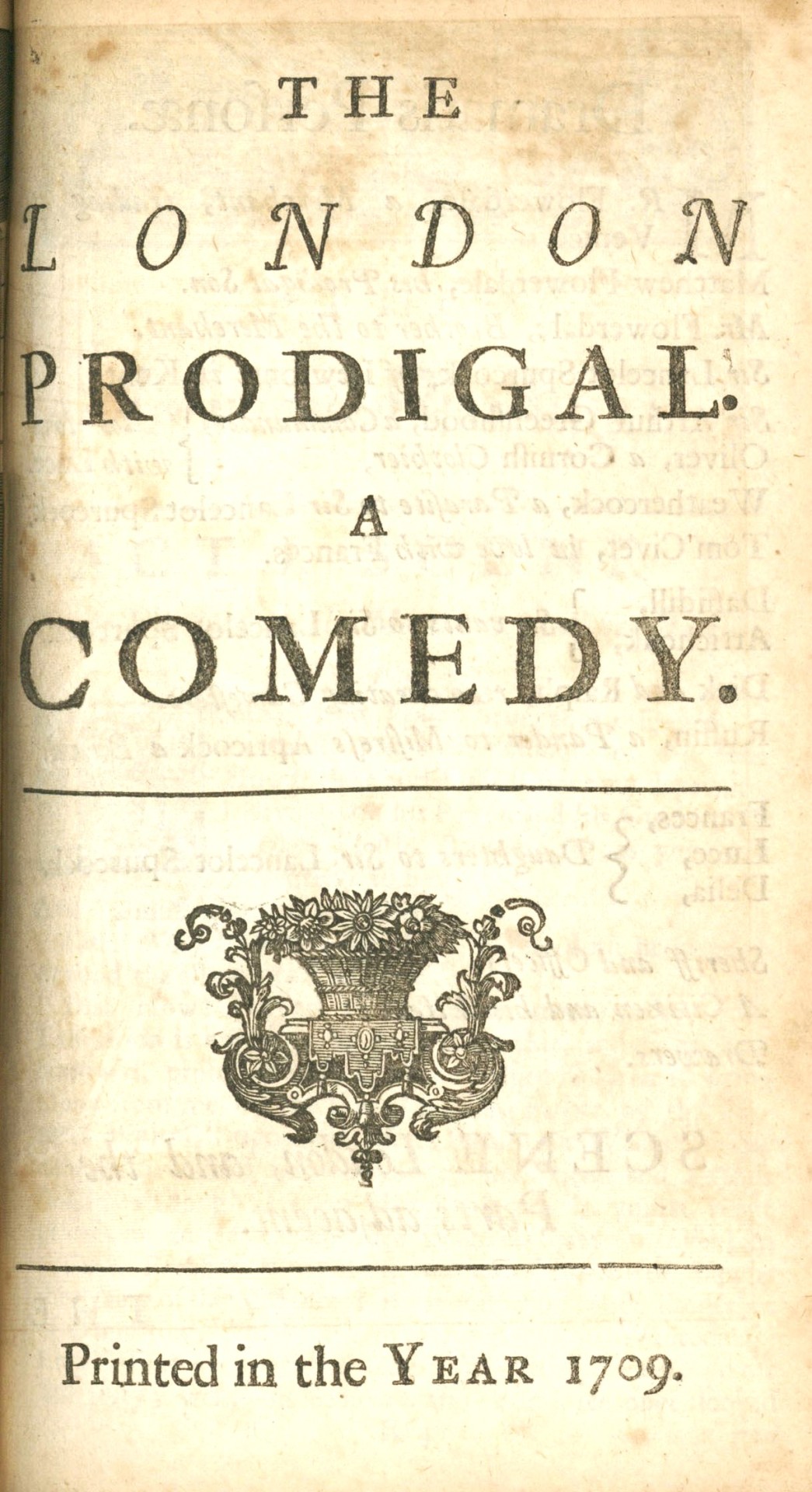

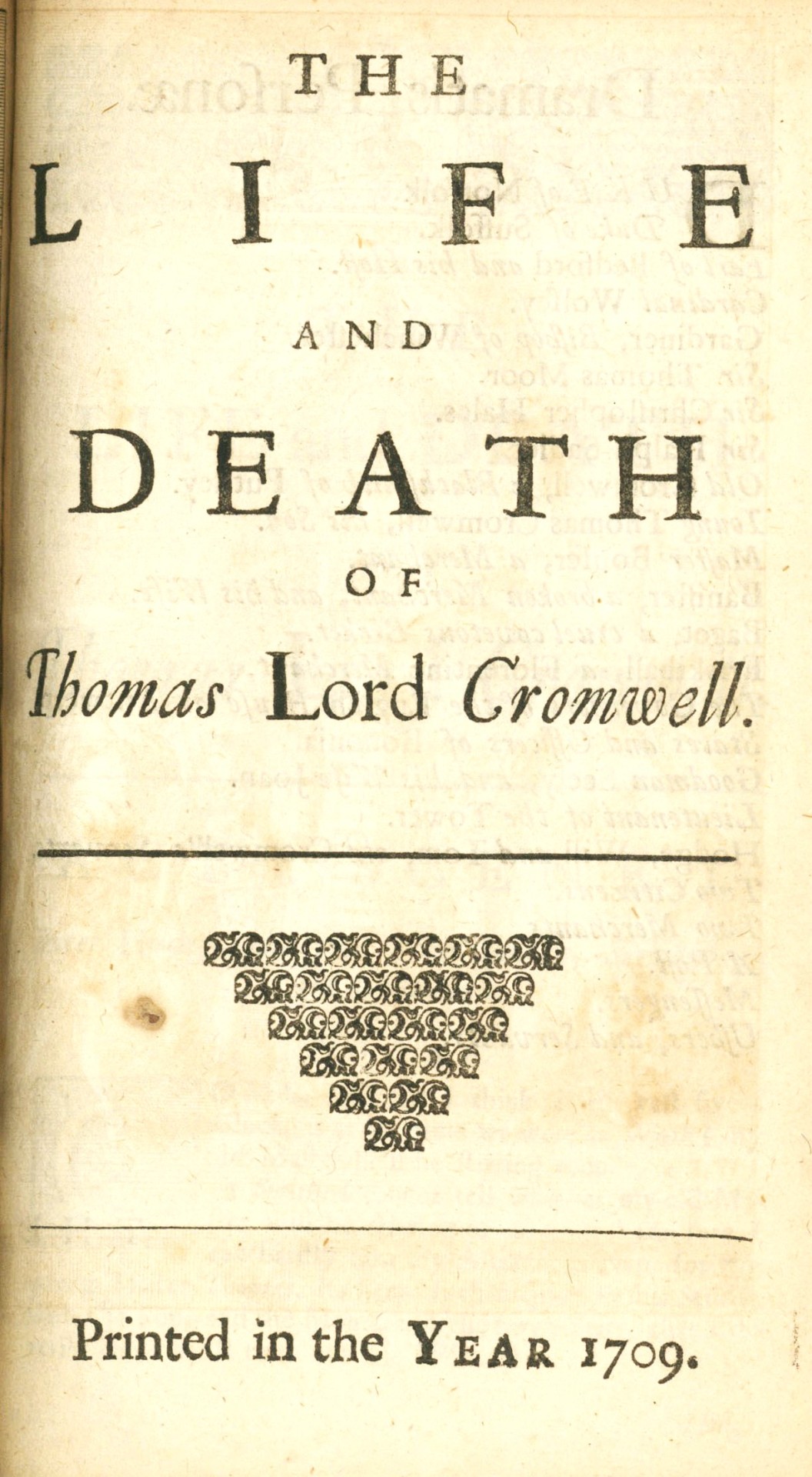
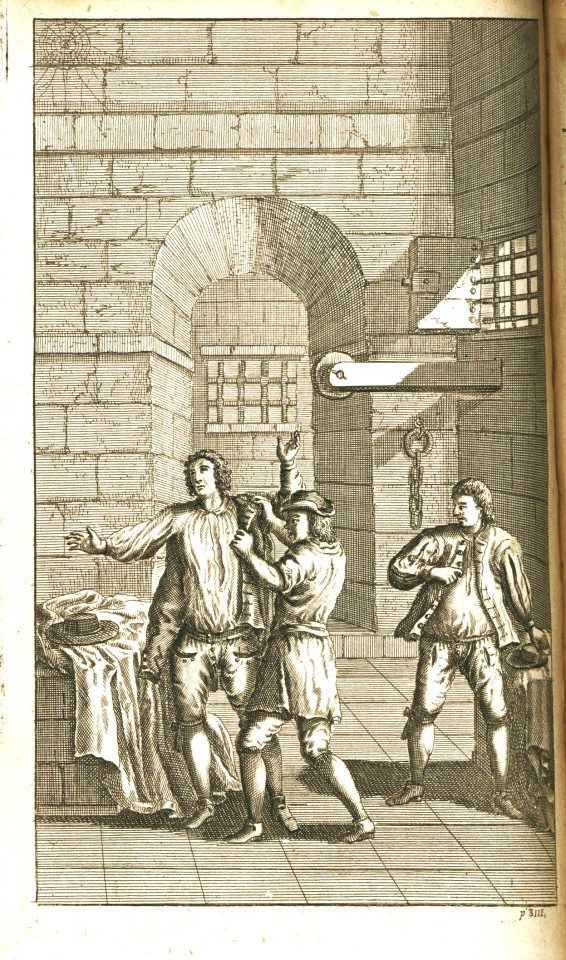

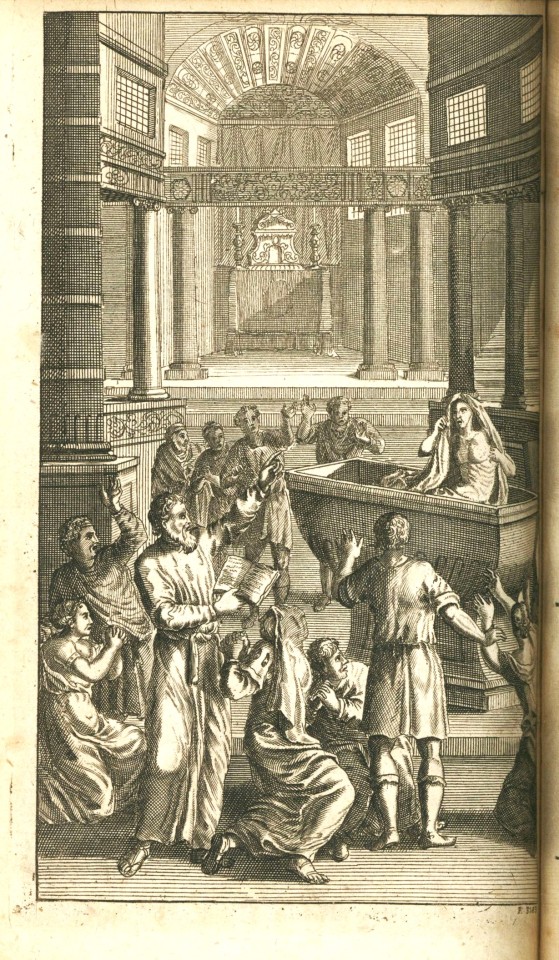





This weekend we are wrapping up Nicholas Rowe’s (1674-1718) The Work of Mr. William Shakespear; in Six Volumes. Published in London in 1709 by Jacob Tonson (1655–1736), this second edition holds an important place within Shakespearean publication history. The Work of Mr. William Shakespear; in Six Volumes is recognized as the first octavo edition, the first illustrated edition, the first critically edited edition, and the first to present a biography of the poet.
Volume six is a collection of Shakespeare’s tragedies and comedies including several plays that are a part of the Shakespeare apocrypha that bear Shakespeare’s name, but do not appear in the First Folio and of which there is question about his role in writing them. Apocrypha in the sixth volume include Pericles Prince of Tyre, London Prodigal, Thomas Lord Cromwell, Sir John Oldcastle, The Puritan, A Yorkshire Tragedy, and Locrine. Volume six also includes confirmed Shakespearean plays Antony and Cleopatra and Cymbeline.
A full-page engraving by the French Baroque artist and book illustrator François Boitard (1670-1715) and engraved by English engraver Elisha Kirkall (c.1682–1742) precedes each play. Boitard’s illustrations often place readers at the pinnacle of the plays depicting high drama in his classic Baroque style.
In addition to Rowe’s editorial decisions to divide the plays into scenes and include notes on the entrances and exits of the players, he also normalised the spelling of names and included a dramatis personae preceding each play. The only chronicled critique of Rowe’s momentous editorial endeavor is his choice in basing his text on the corrupt Fourth Folio.
View more volumes of The Works of Mr. William Shakespear; in Six Volumes here.
View more Shakespeare Weekend posts.
-Jenna, Special Collections Graduate Intern
#Shakespeare Weekend#william shakespeare#shakespeare#mr. william shakespear in six volumes#nicholas rowe#jacob tonson#Shakespeare apocrypha#apocrypha#francois boitard#elisha kirkall#antony and cleopatra#cymbeline#pericles prince of tyre#london prodigal#thomas lord cromwell#sir john oldcastle#the puritan#a yorkshire tragedy#locrine
43 notes
·
View notes
Text
Shakespeare Weekend!
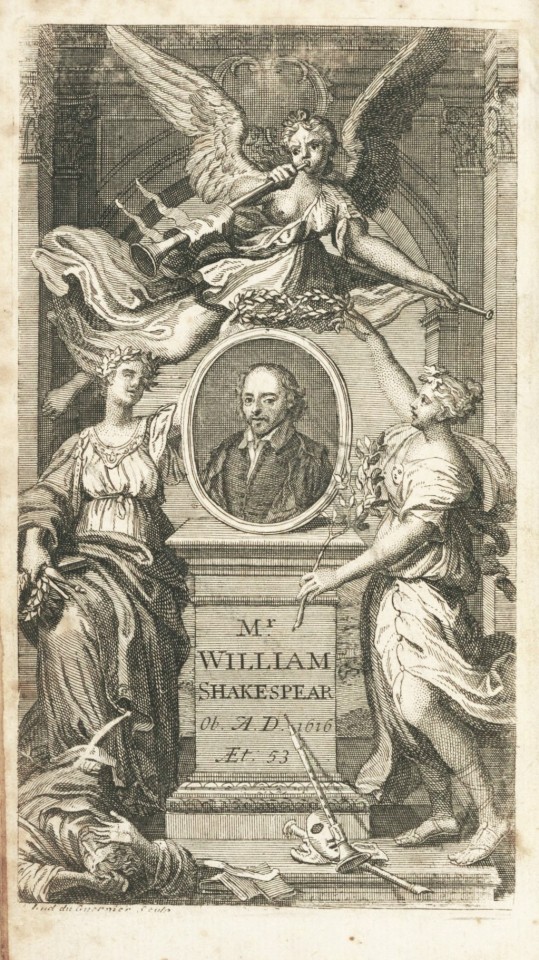
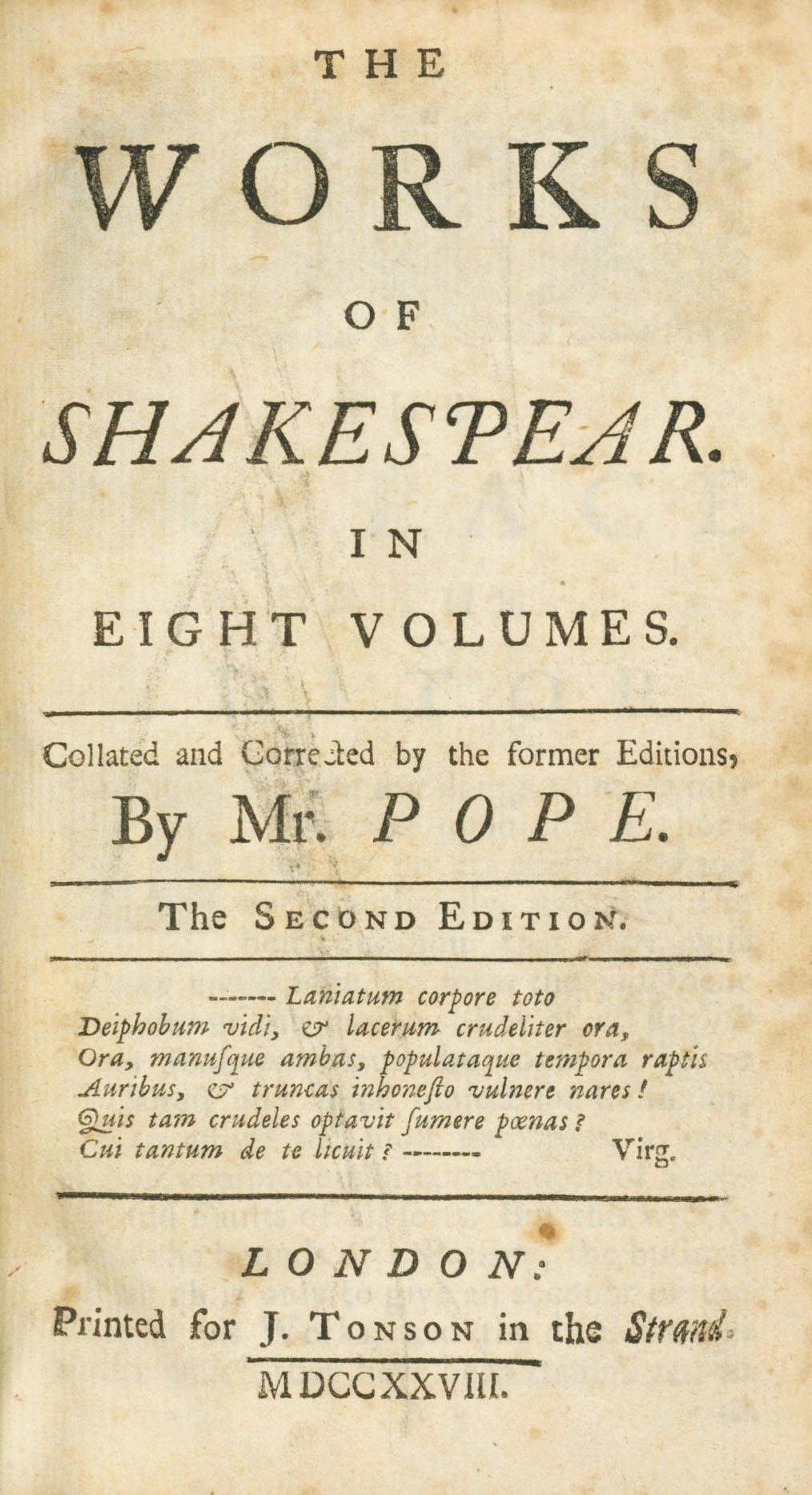


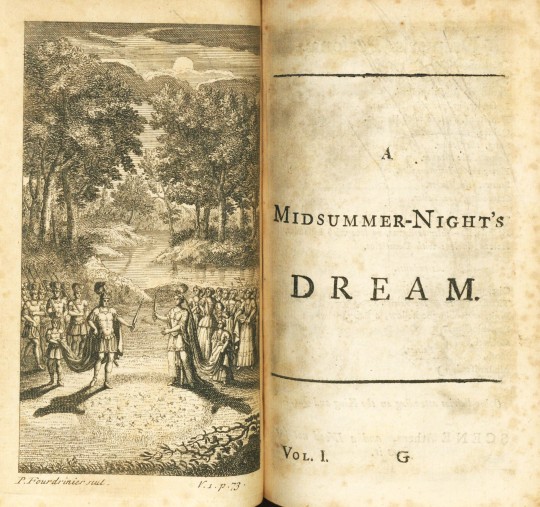



The next illustrated collection of Shakespeare from our holdings is the second edition of The Works of Mr. William Shakespear: In Ten Volumes published by Alexander Pope (1688-1744) and Dr. George Sewell (d. 1726) for Jacob Tonson (1655-1736). Pope’s second edition was published in eight volumes in 1728, followed by supplementary ninth and tenth volumes. Sewell is only credited within the tenth volume.
Volume One includes a preface by Pope followed by Nicholas Rowe’s biographical essay Some Account of the Life of Mr. William Shakespear and a poem in memory of Shakespeare by English dramatist Ben Jonson (1572-1637). Plays contained within volume one include The Tempest, A Midsummer Night’s Dream, The Two Gentlemen of Verona, The Merry Wives of Windsor, and Measure for Measure.
Pope’s editions of Shakespeare were the first attempted to collate all previous publications in order to help determine authorial text and regularize Shakespearean metre. He consulted twenty-seven early quartos restoring passages that had been out of print for almost a century. Pope also took liberties in removing about 1,560 lines of material that didn’t appeal to him. Some such lines were degraded to the bottom of the page with his other editorial notes. At the time, his editorial hand was met with some criticism and dismissal but historically it may be seen as one of the first scholarly approaches to Shakespeare.
Pope followed in Rowe’s footsteps including scene divisions, stage directions, dramatis personae, and full-page engravings preceding each play. Volume One’s engravings are attributed to French artist Louis Du Guernier (1677-1716) and Englishman Paul Fourdrinier (1698-1758). Dedicated readers of Shakespeare Weekend may notice some of the engravings’ extreme similarities to François Boitard’s work from Rowe’s volumes, particularly in the frontispiece interpretation of Shakespeare's Stratford monument.
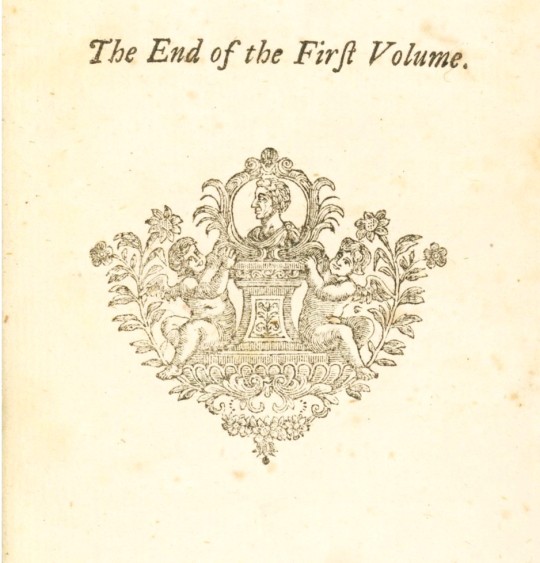
View more Shakespeare Weekend posts.
-Jenna, Special Collections Graduate Intern
#Shakespeare Weekend#william shakespeare#shakespeare#the works of mr. william shakespear: in ten volumes#alexander pope#dr. george sewell#george sewell#jacob tonson#nicholas rowe#ben johnson#the tempest#a midsummer night's dream#the two gentlemen of verona#the merry wives of windsor#measure for measure#louis du guernier#paul fourdrinier#francois boitard#engraving
33 notes
·
View notes
Text
Shakespeare Weekend!

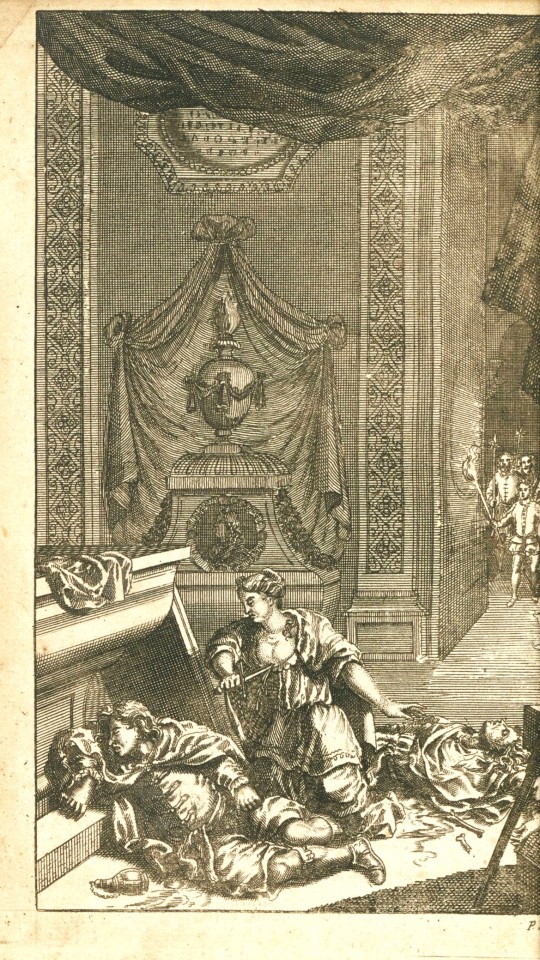



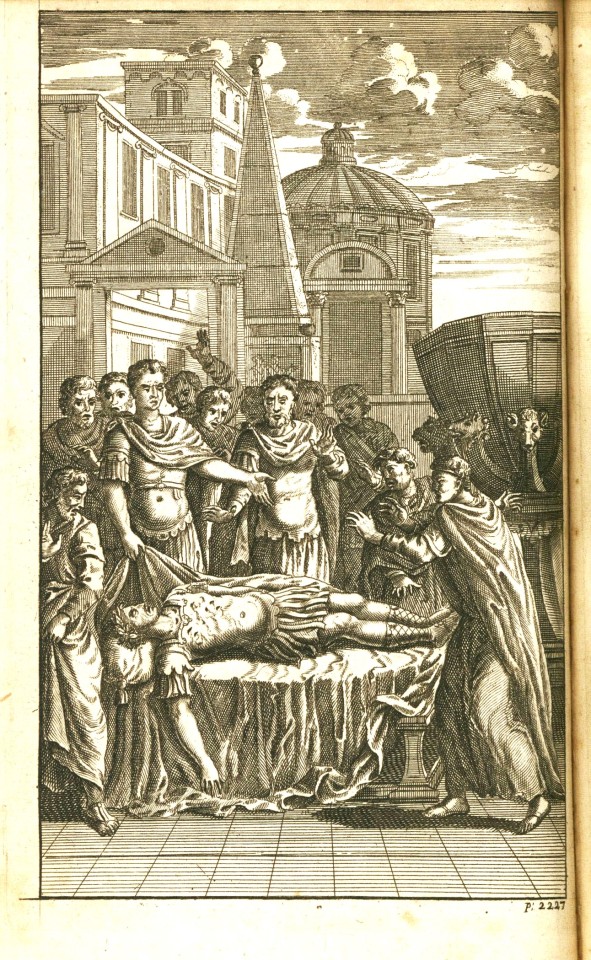









This weekend we come back to Nicholas Rowe’s (1674-1718) The Work of Mr. William Shakespear; in Six Volumes. Published in London in 1709 by Jacob Tonson (1655–1736), this second edition holds an important place within Shakespearean publication history. The Work of Mr. William Shakespear; in Six Volumes is recognized as the first octavo edition, the first illustrated edition, the first critically edited edition, and the first to present a biography of the poet.
Volume five contains Shakespeare’s renowned tragedies beginning with everyone’s favorite young Italian lovers, Romeo and Juliet. Following Romeo and Juliet is Timon of Athens, Julius Caesar, Macbeth, Hamlet Prince of Denmark, King Lear, and Othello. A full-page engraving by the French artist and book illustrator François Boitard (1670-1715) precedes each play. The illustrations were engraved by prolific English engraver Elisha Kirkall (c.1682–1742) who had previously worked with Rowe on his translation of Lucan's Pharsalia. Boitard’s illustrations often place readers at the pinnacle of the plays depicting high drama in his classic Baroque style.
In addition to Rowe’s editorial decisions to divide the plays into scenes and include notes on the entrances and exits of the players, he also normalised the spelling of names and included a dramatis personae preceding each play. The only chronicled critique of Rowe’s momentous editorial endeavor is his choice in basing his text on the corrupt Fourth Folio.
View more volumes of The Works of Mr. William Shakespear; in Six Volumes here.
View more Shakespeare Weekend posts.
-Jenna, Special Collections Graduate Intern
#shakespeare weekend#nicholas rowe#the work of mr. william shakespear#jacob tonson#francois boitard#elisha kirkall#romeo and juliet#timon of athens#julius caesar#macbeth#hamlet#king lear#othello
25 notes
·
View notes
Photo

A Scene from Ancient History by François Boitard, Drawings and Prints
Medium: Pen and black ink, gray wash
Gift of Dr. Bruce B. Grynbaum, in memory of his parents Gertrude and Maurycy Grynbaum, 1991 Metropolitan Museum of Art, New York, NY
http://www.metmuseum.org/art/collection/search/336326
10 notes
·
View notes